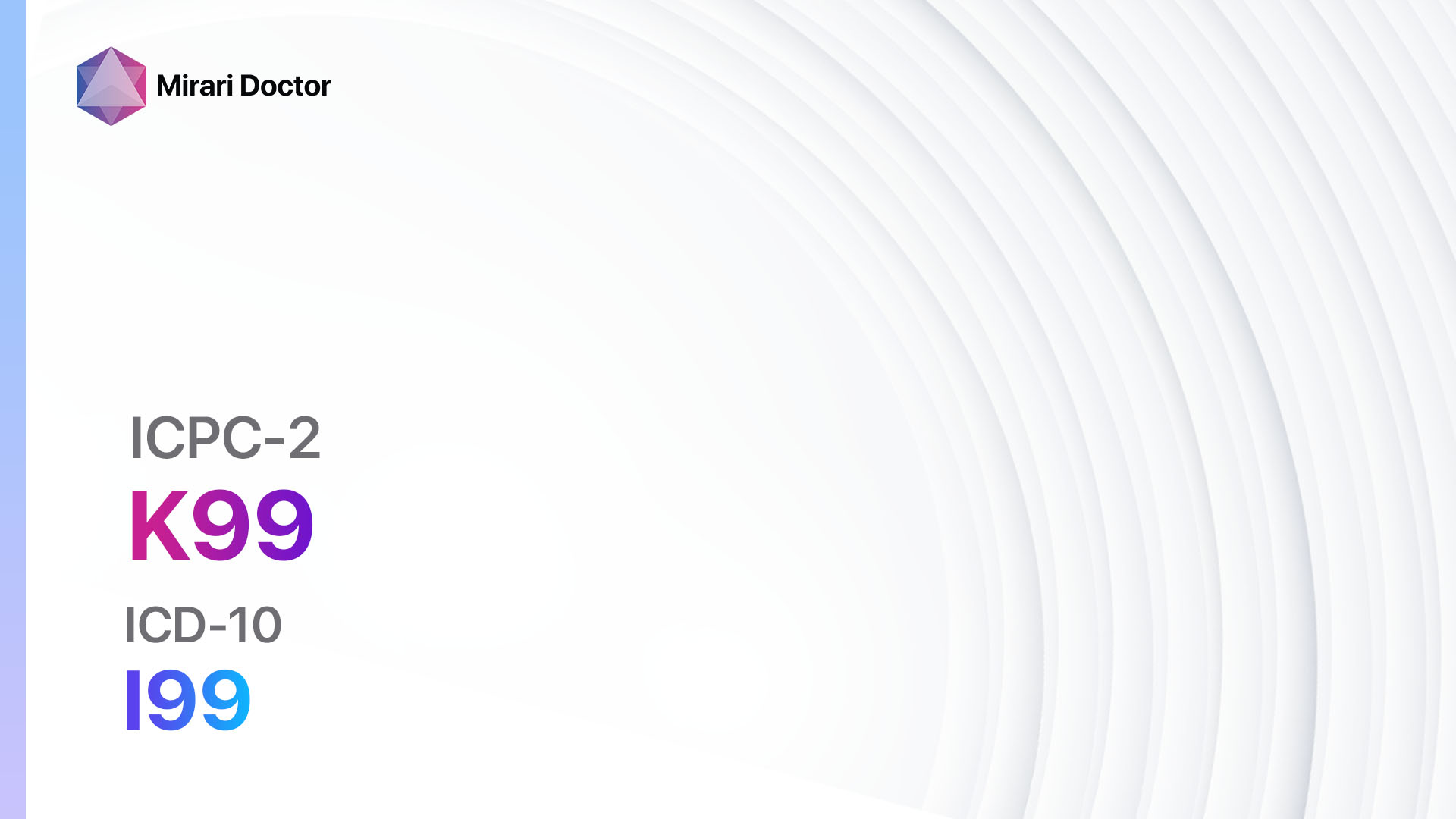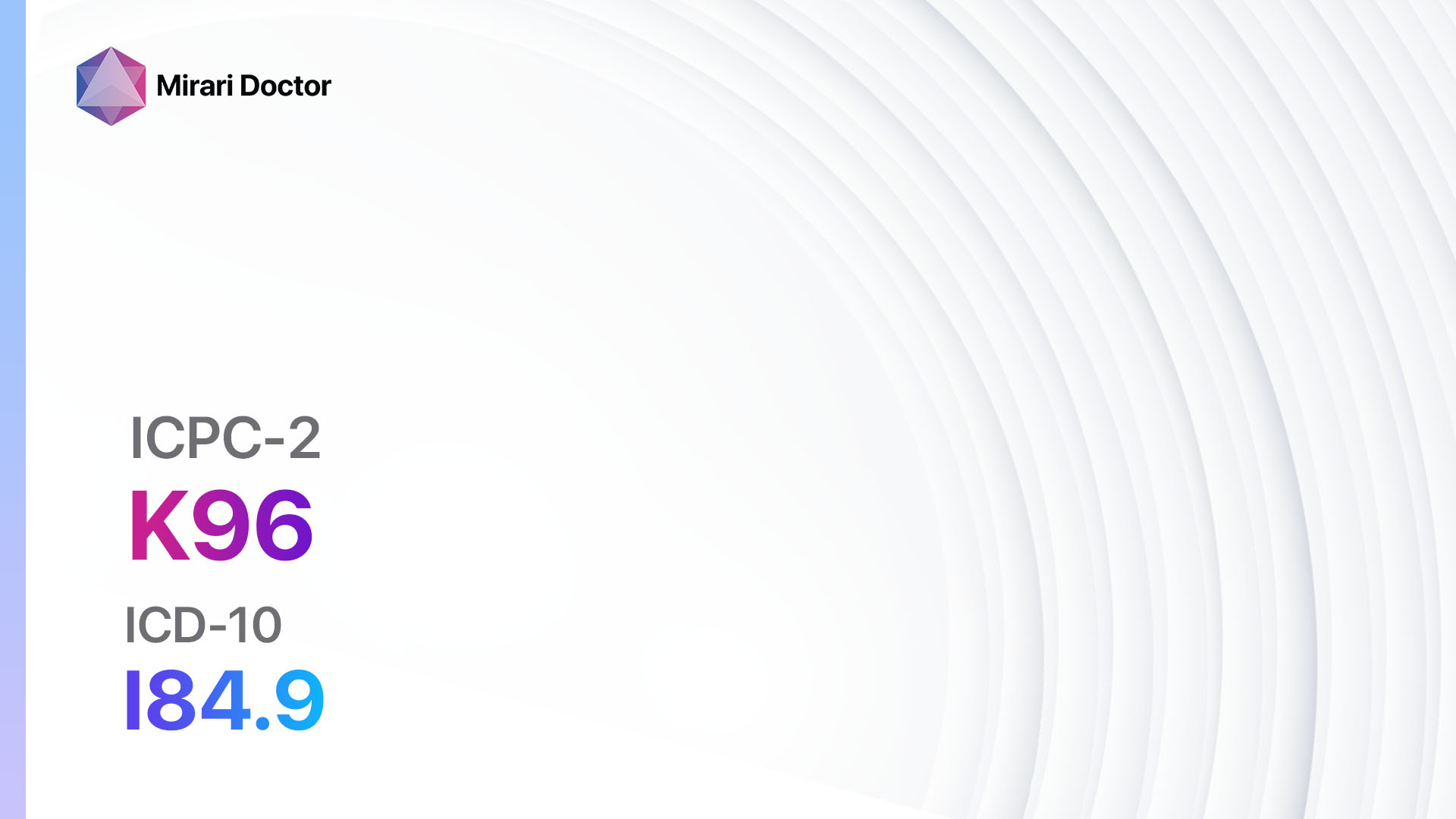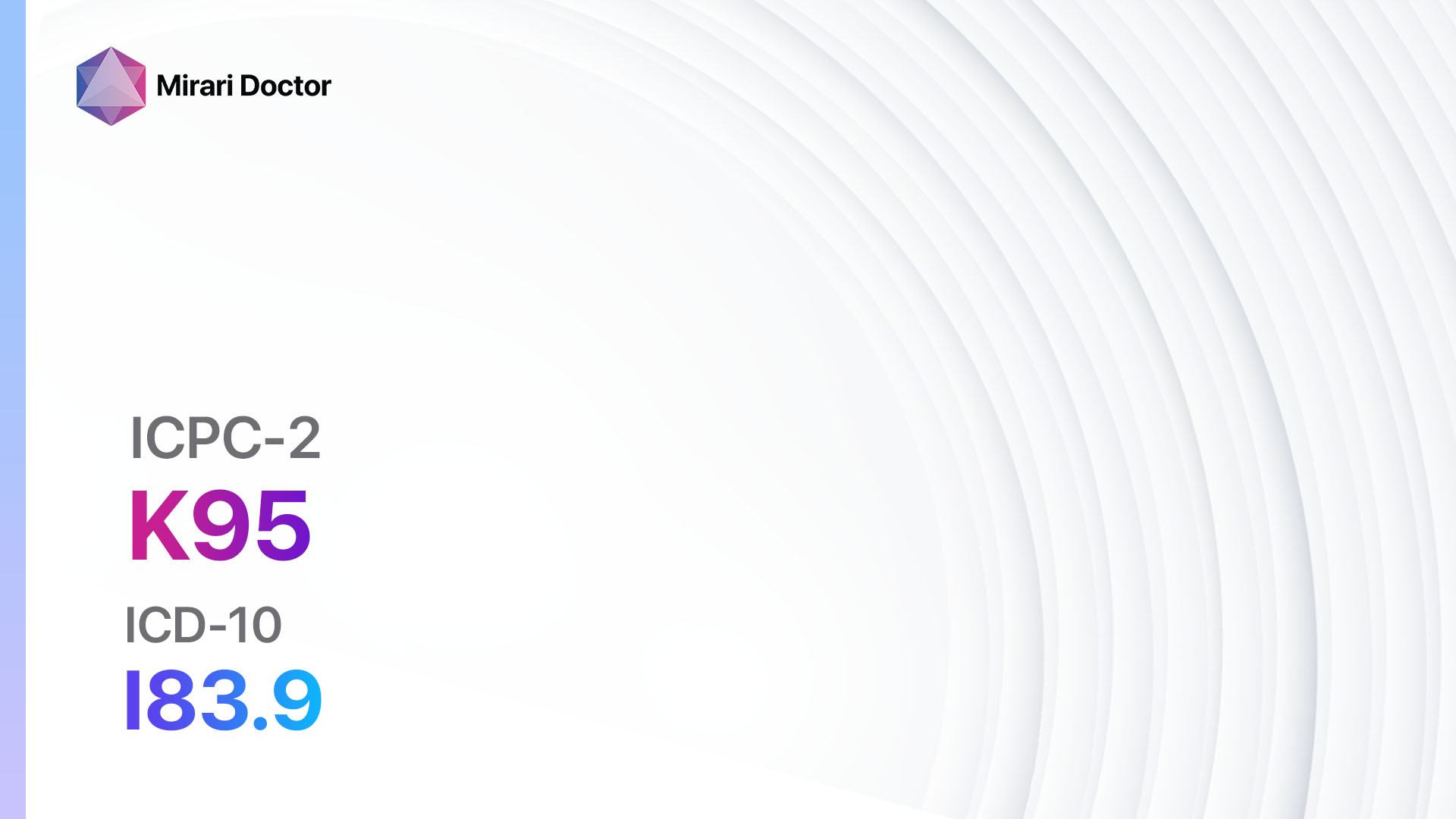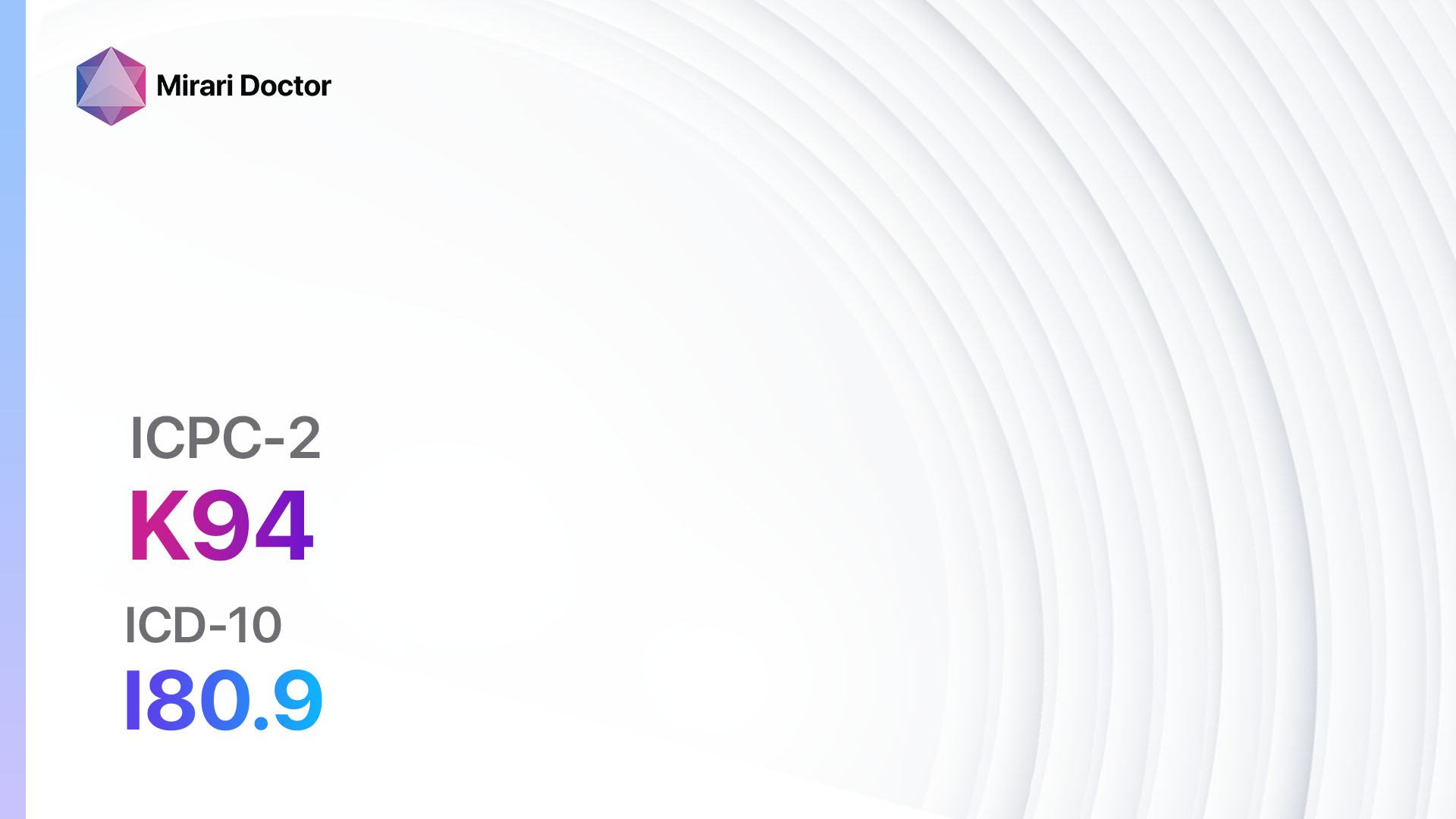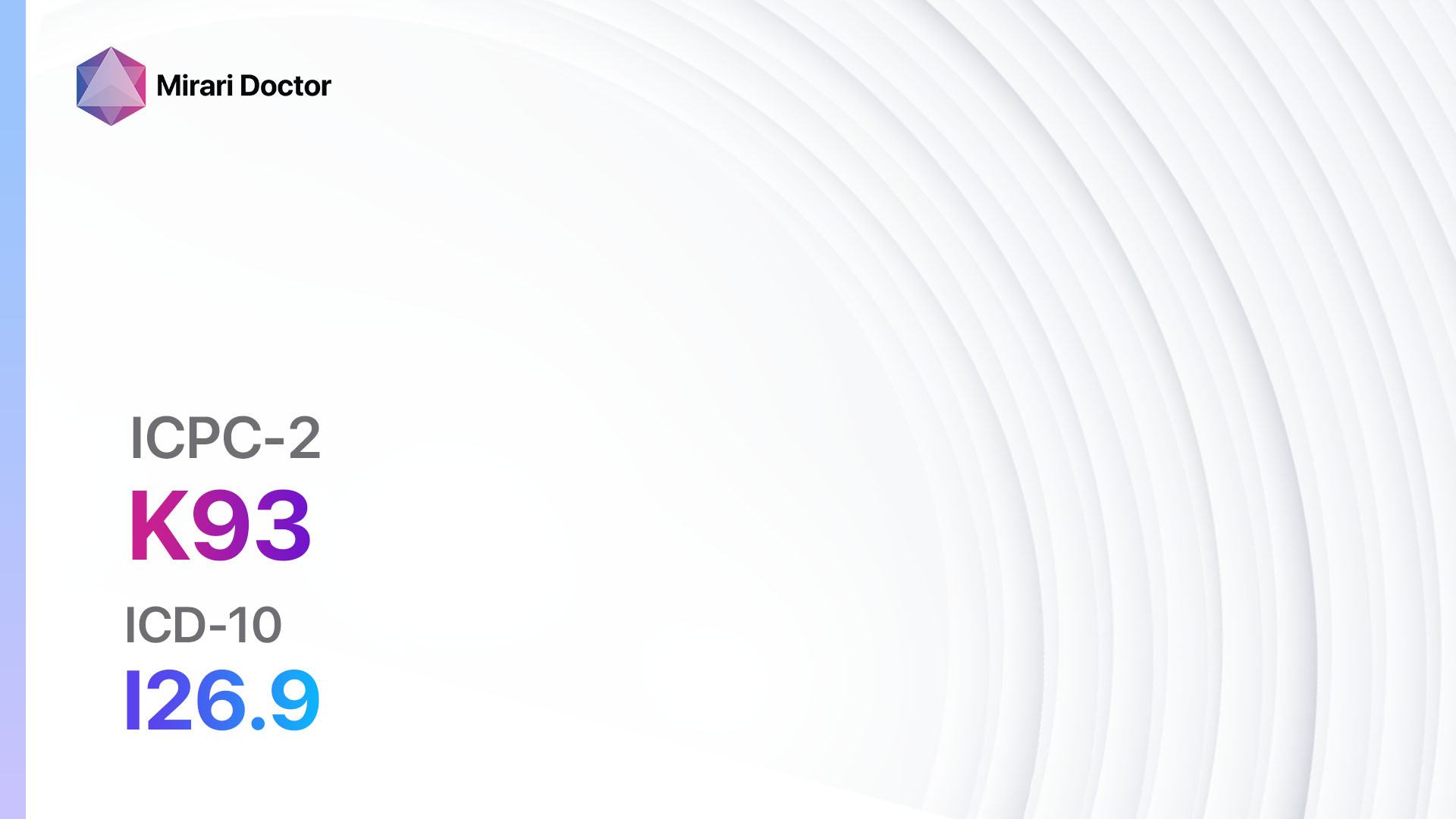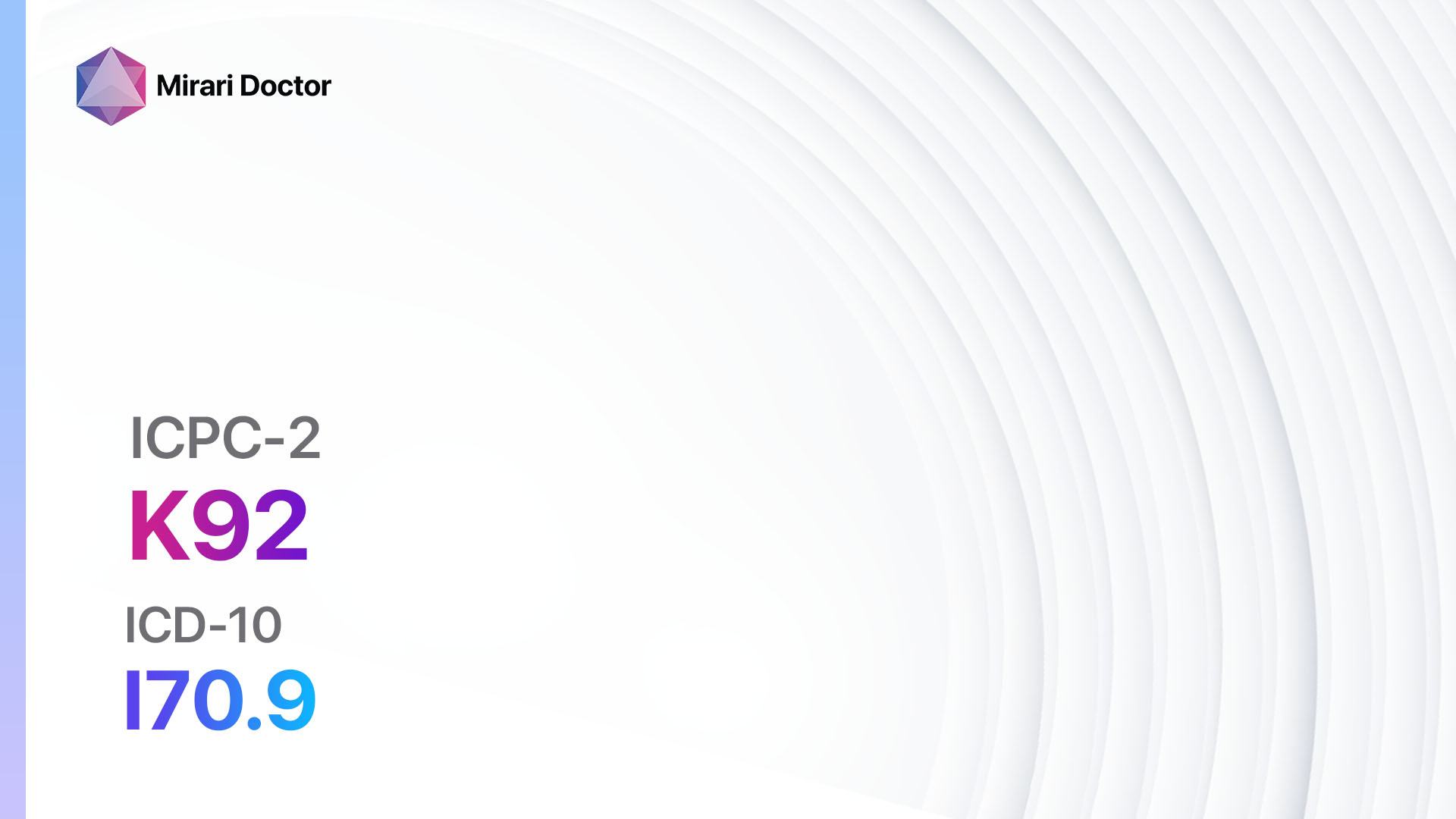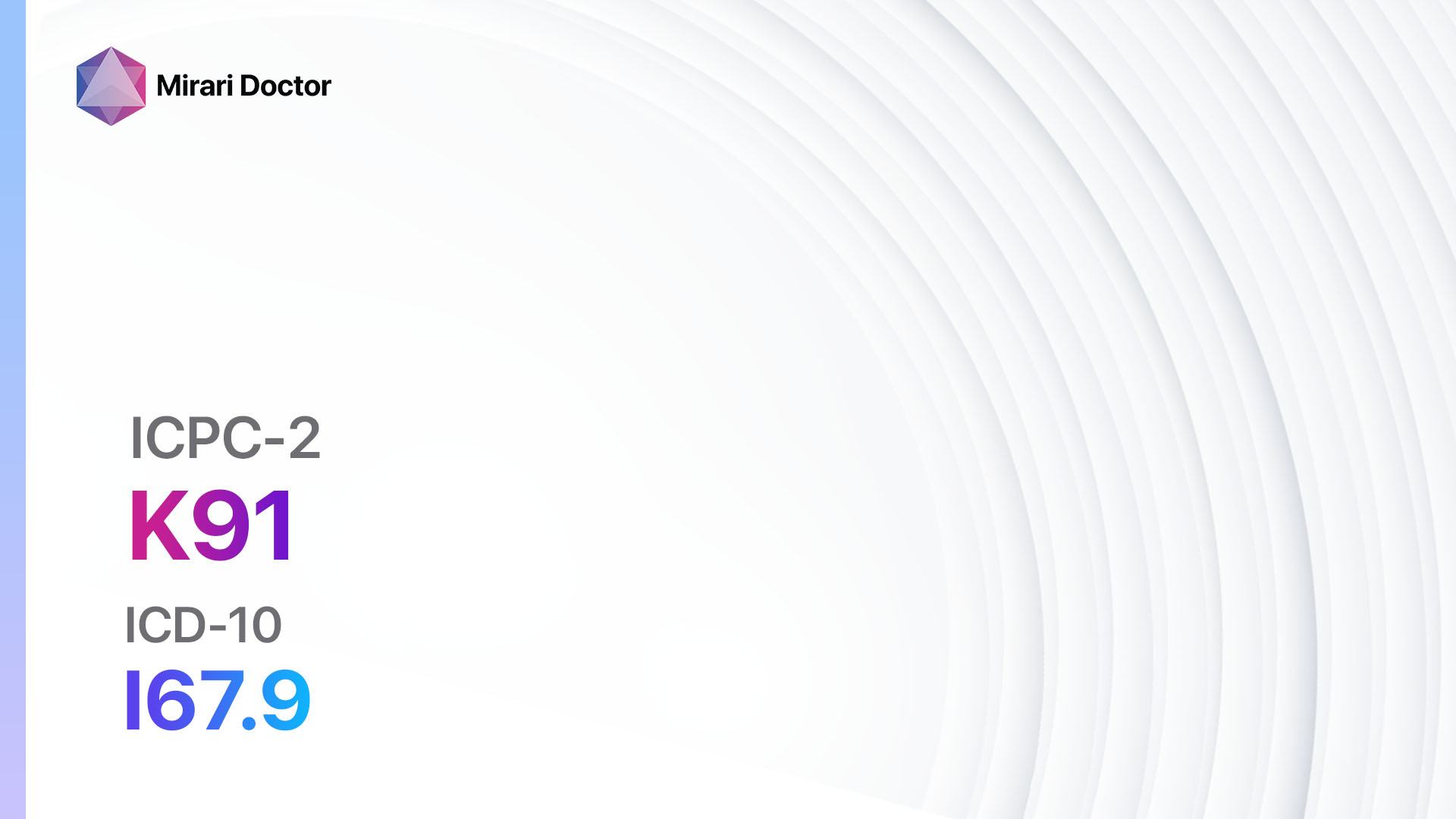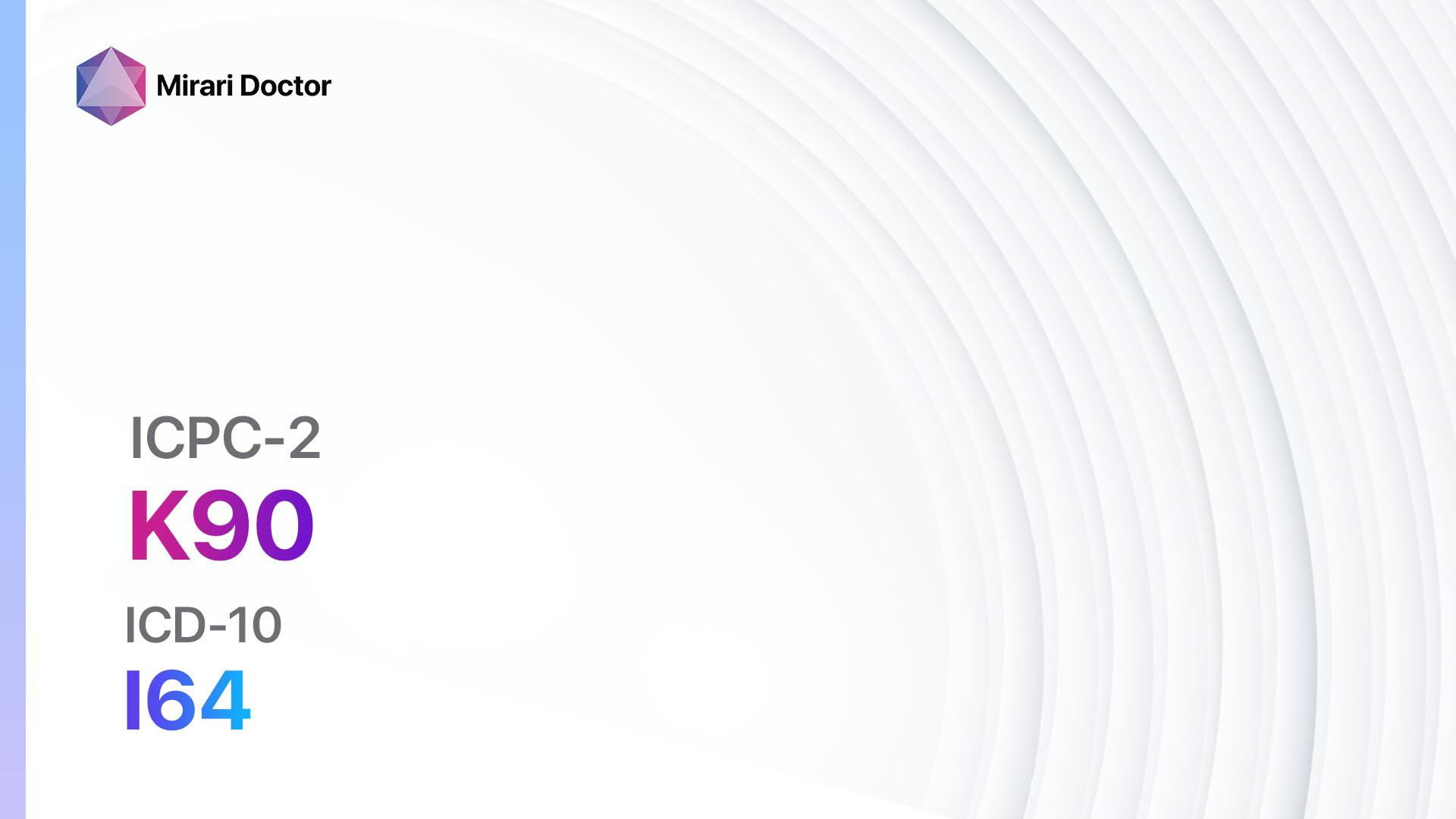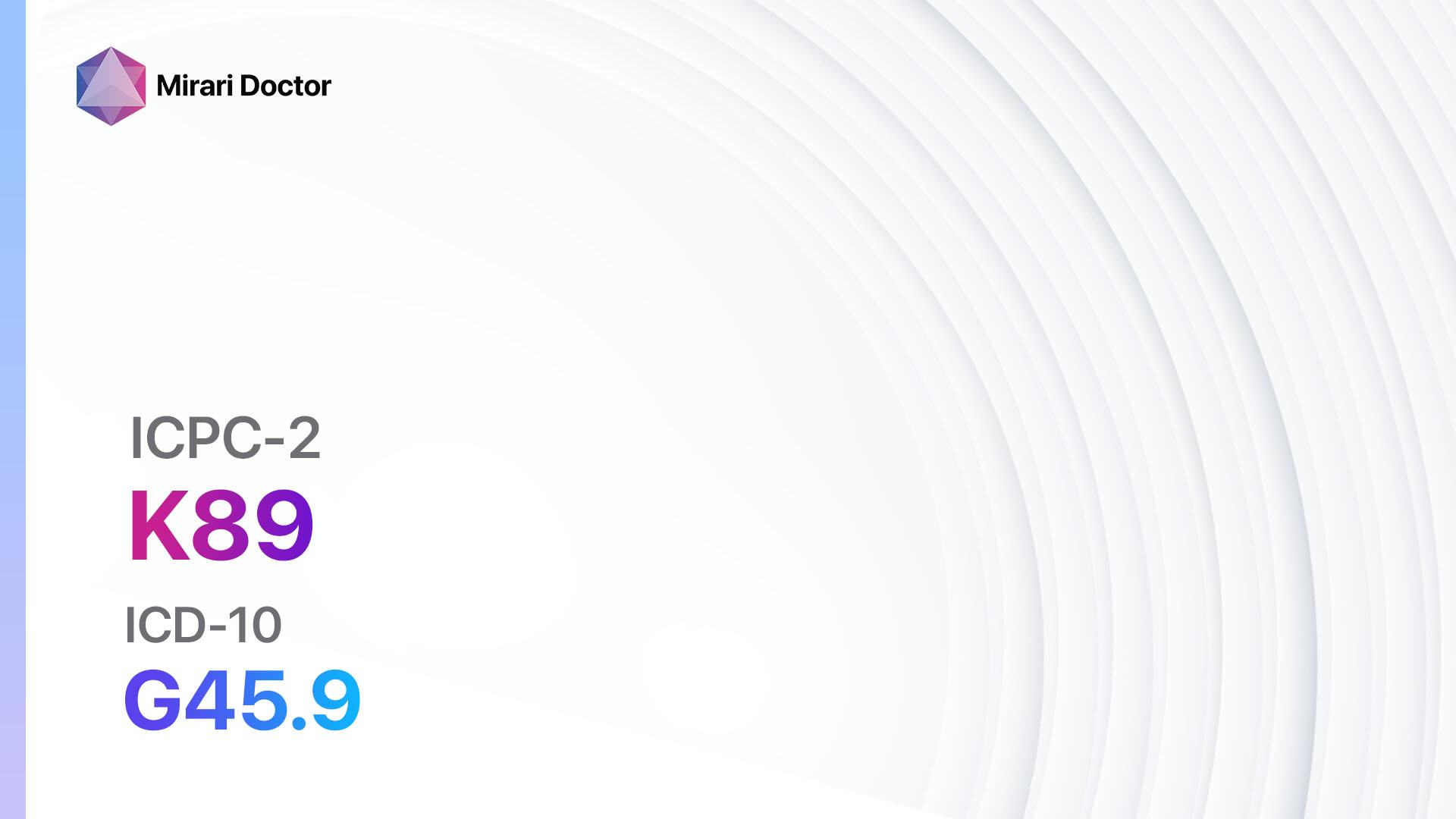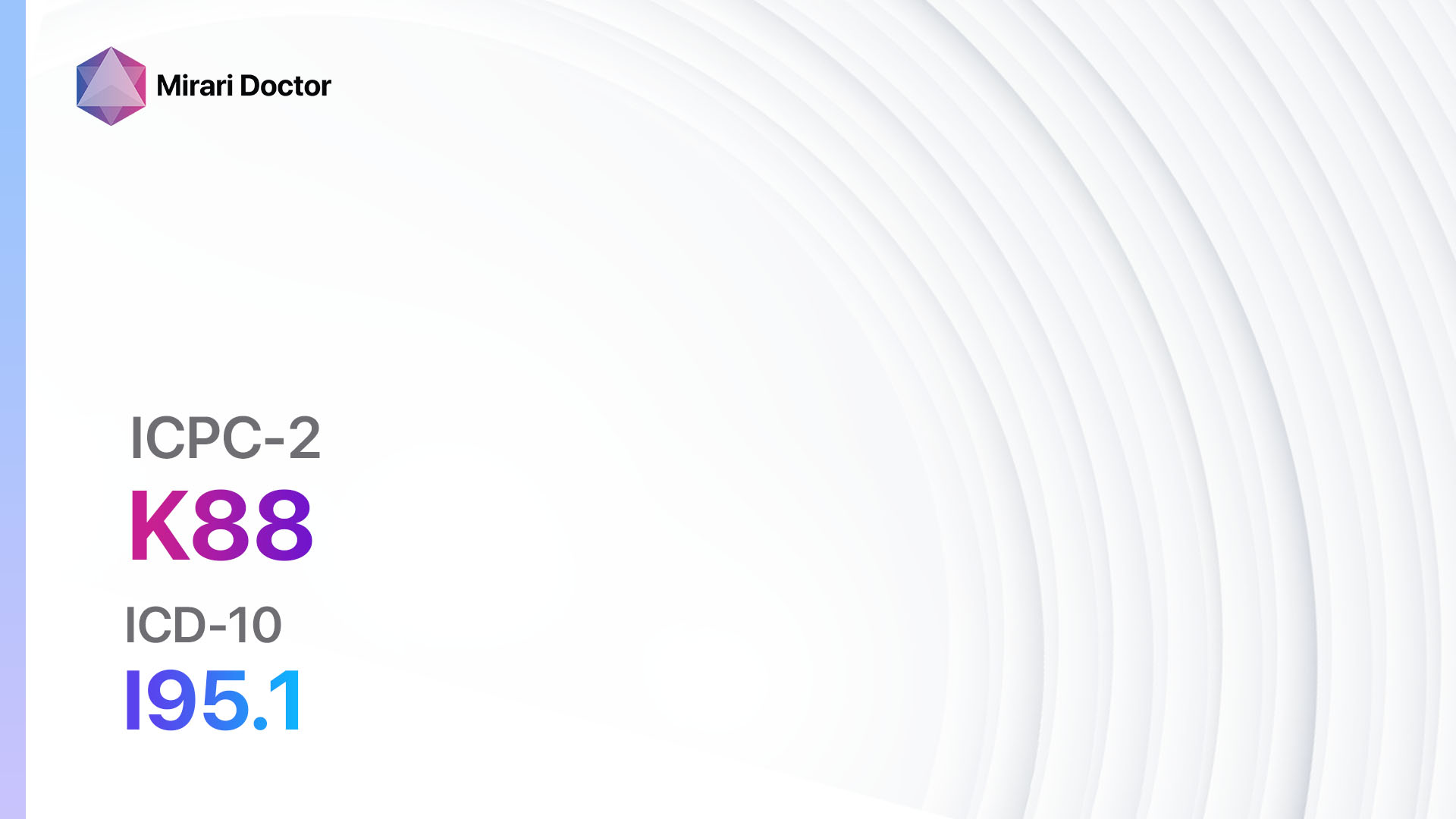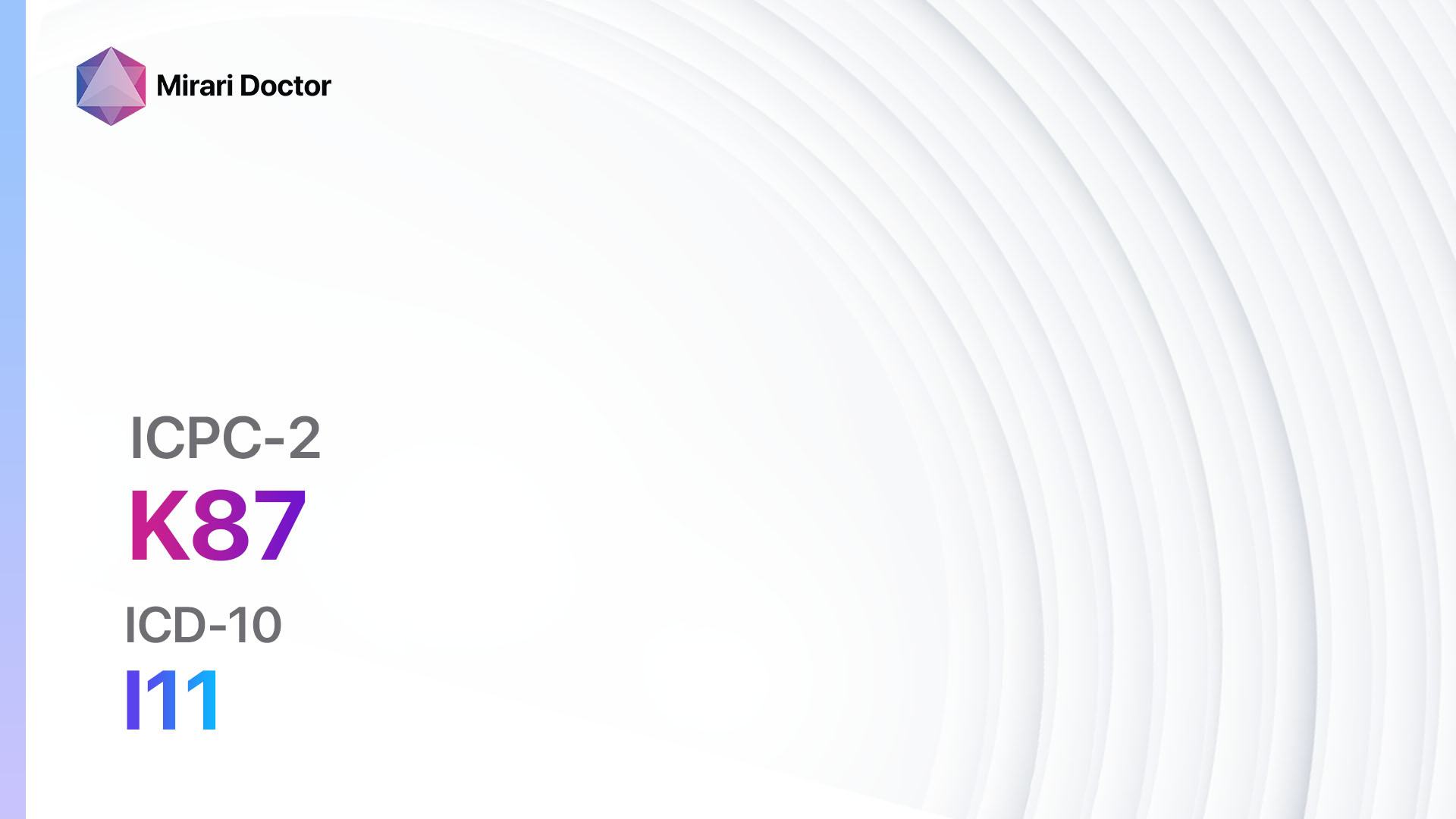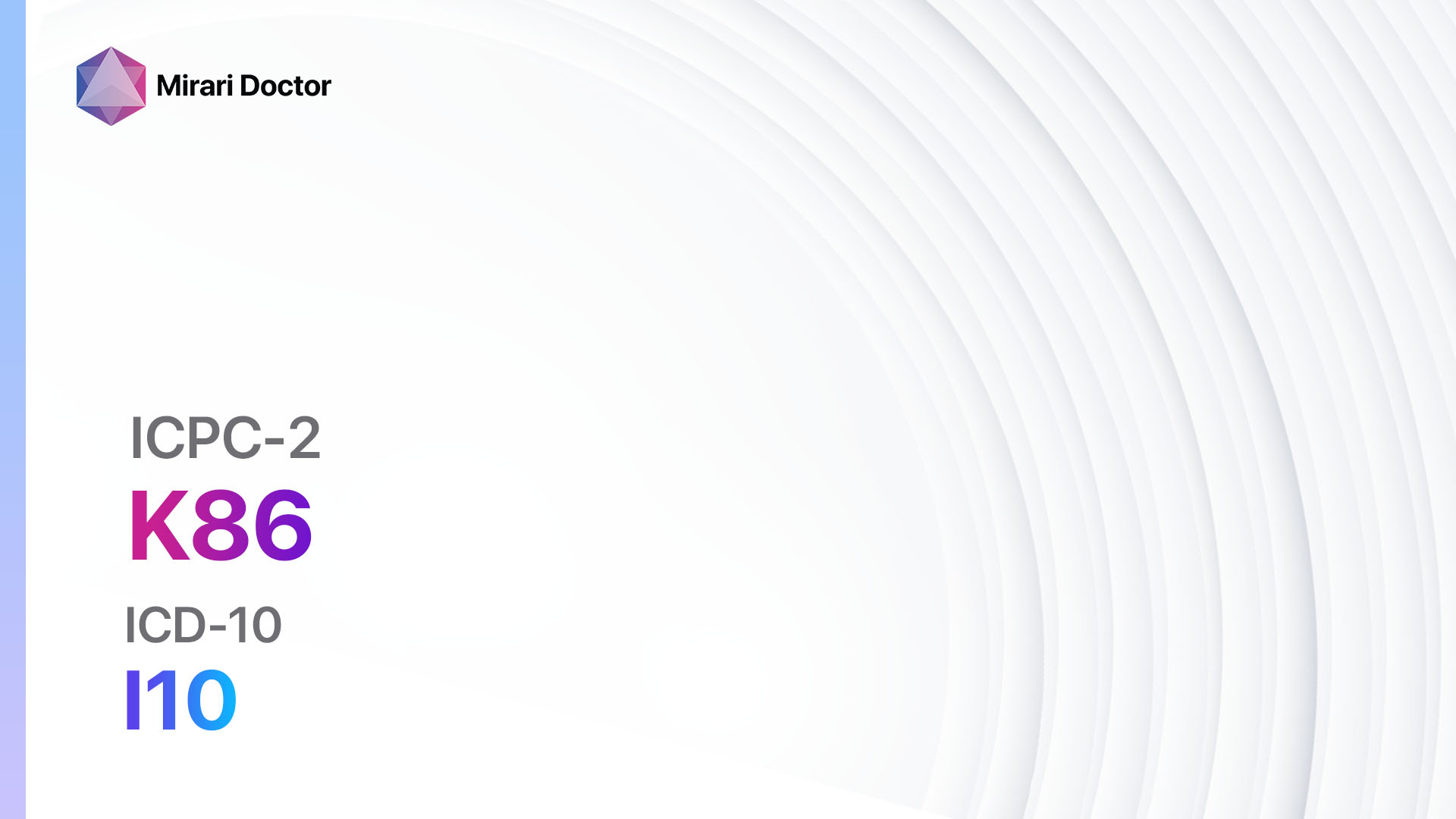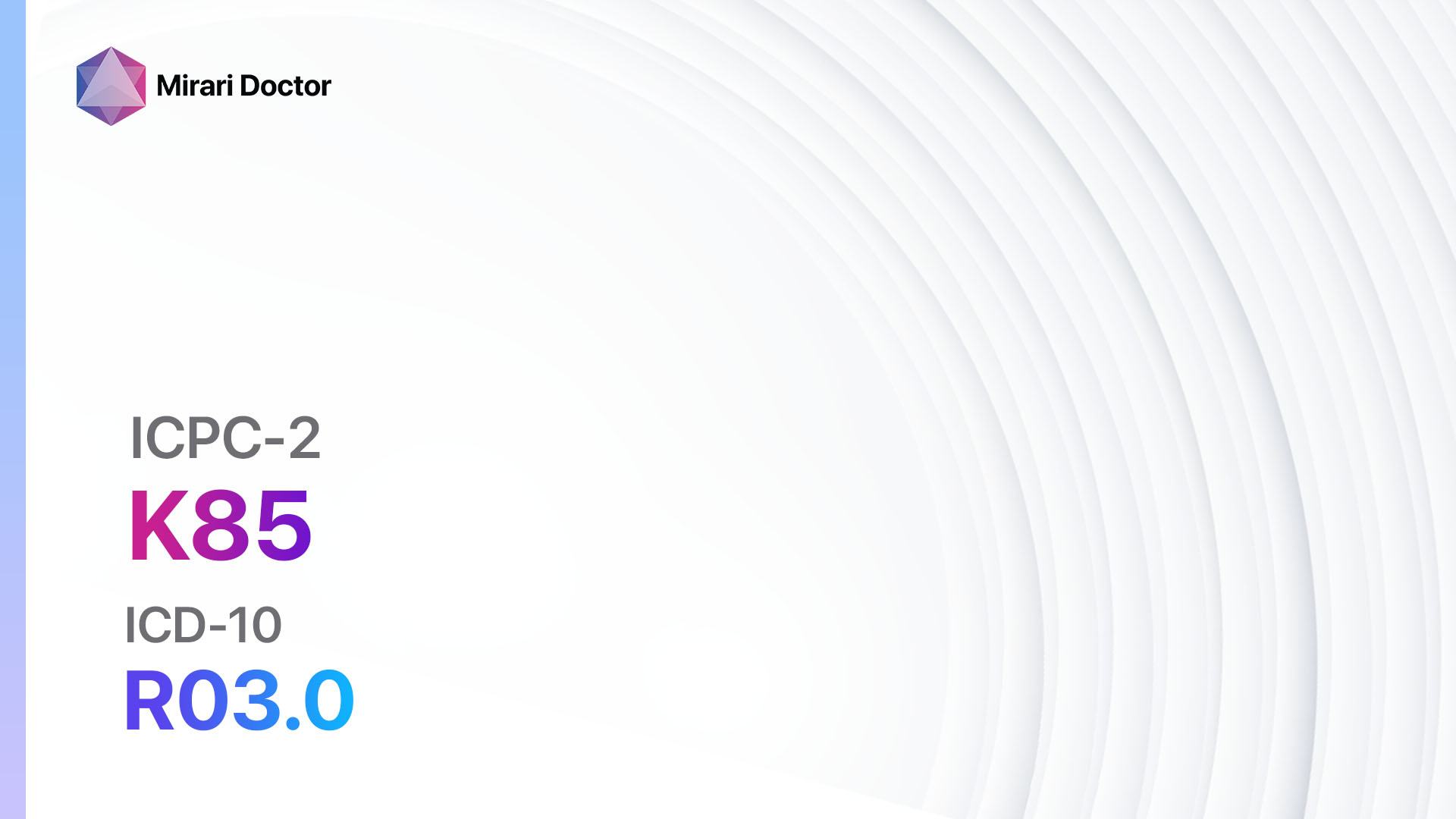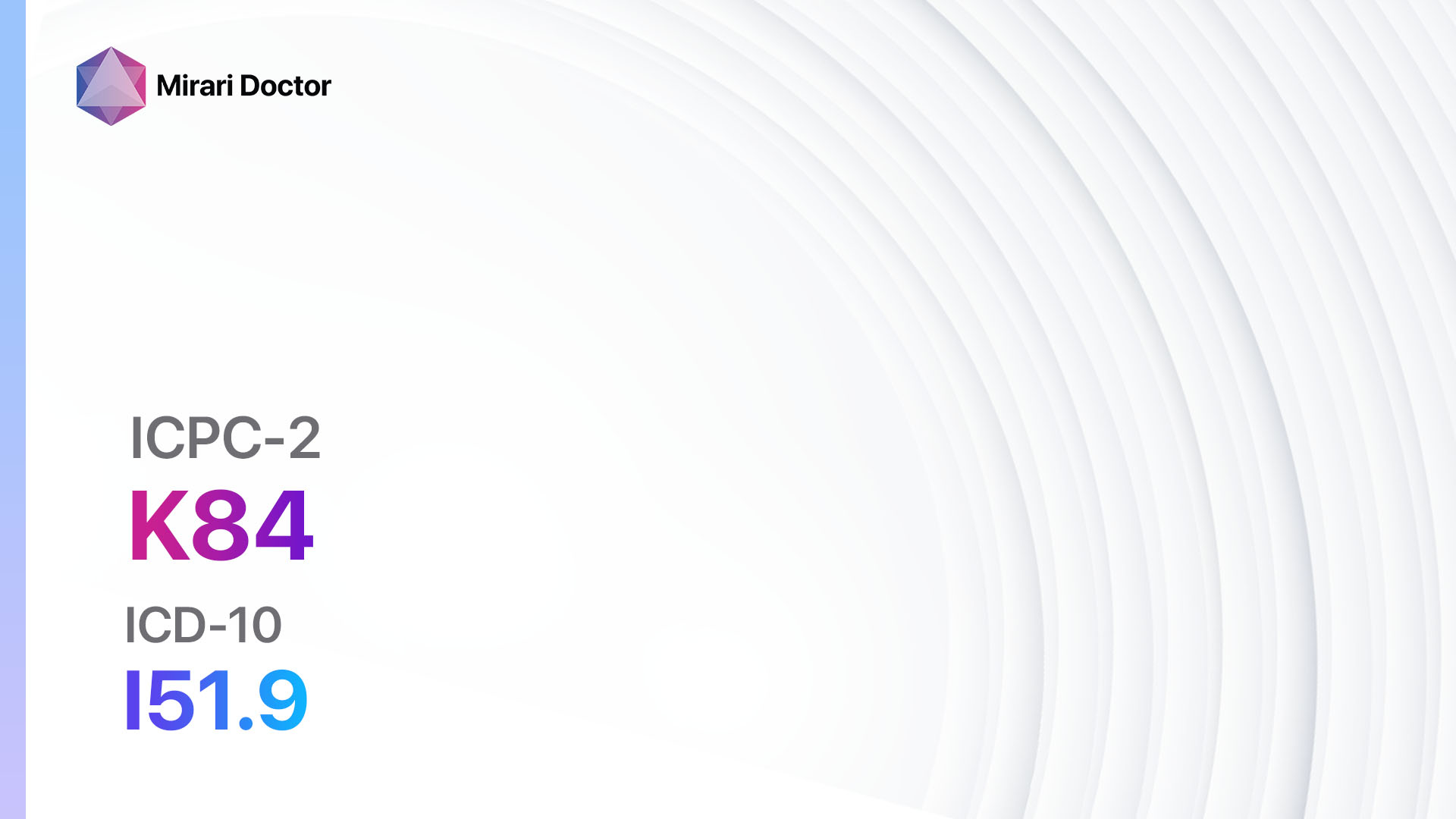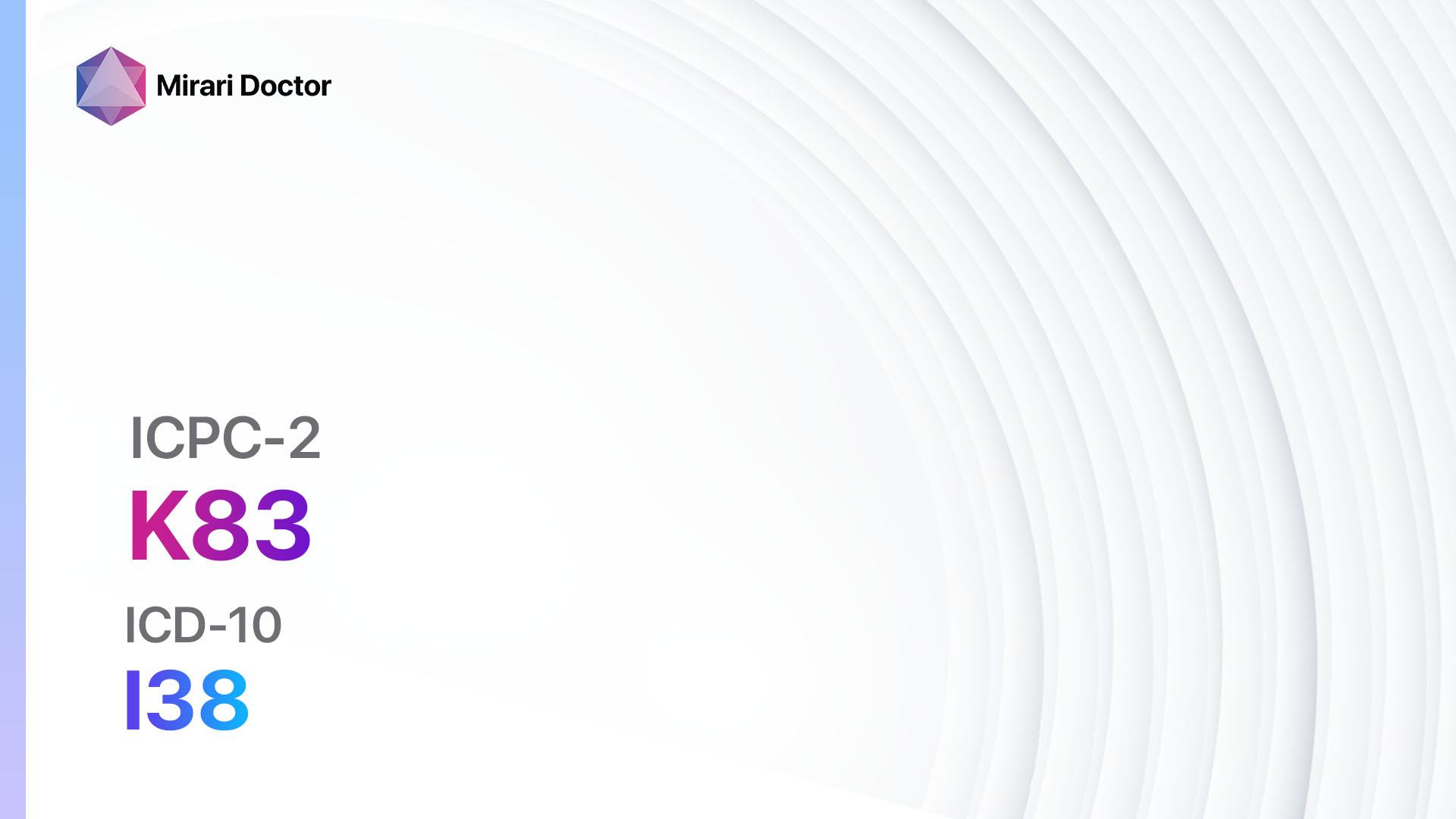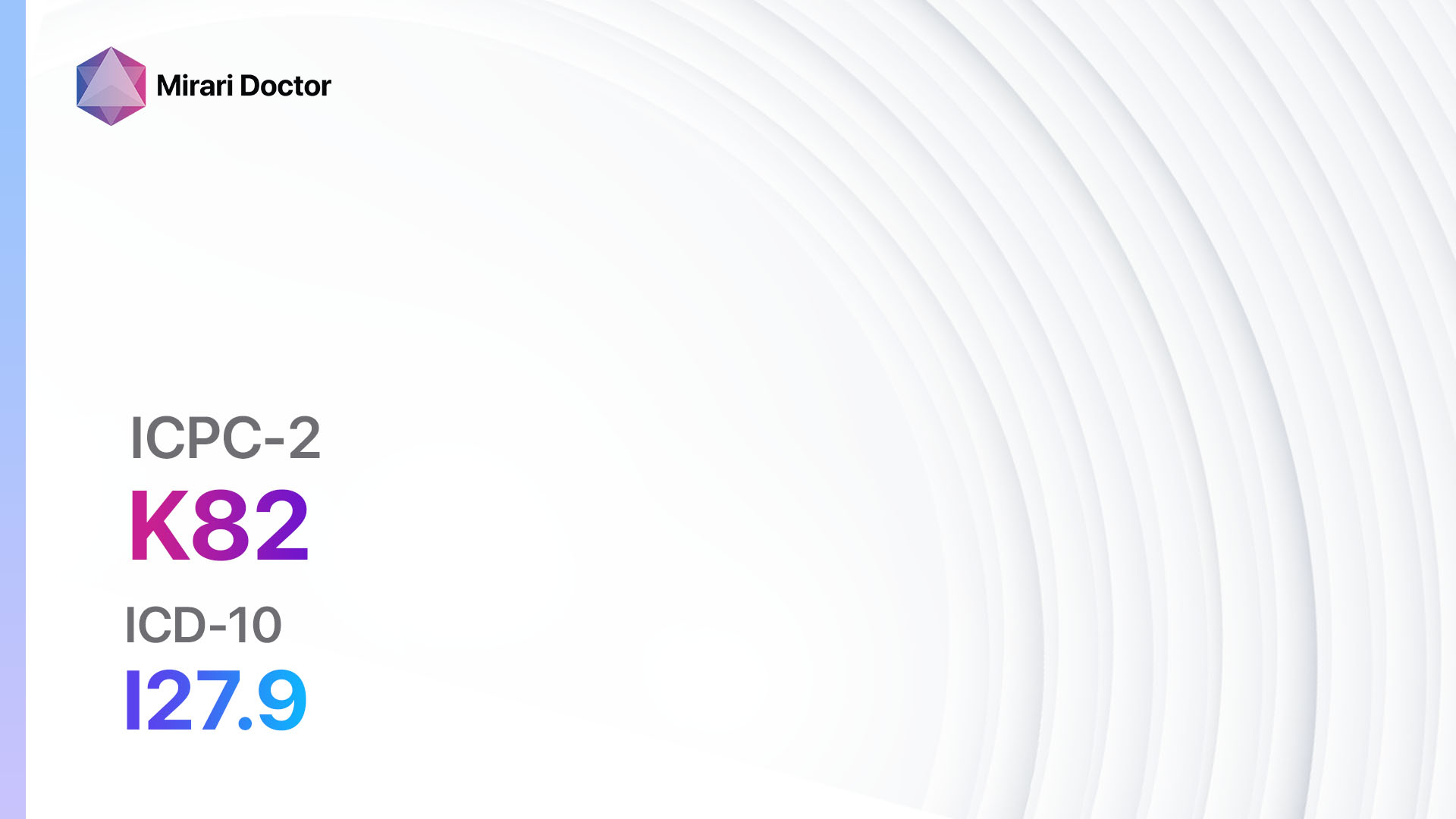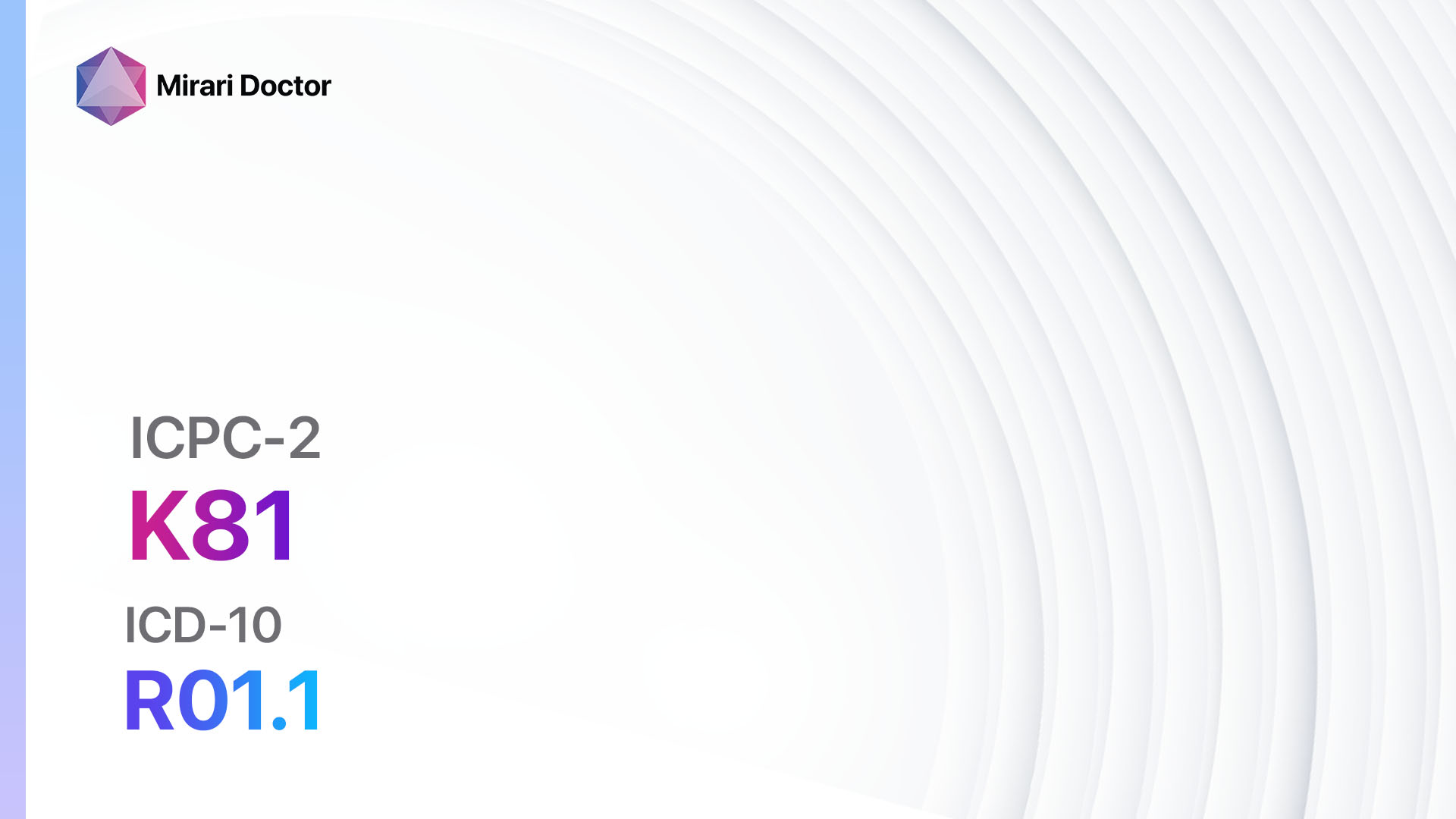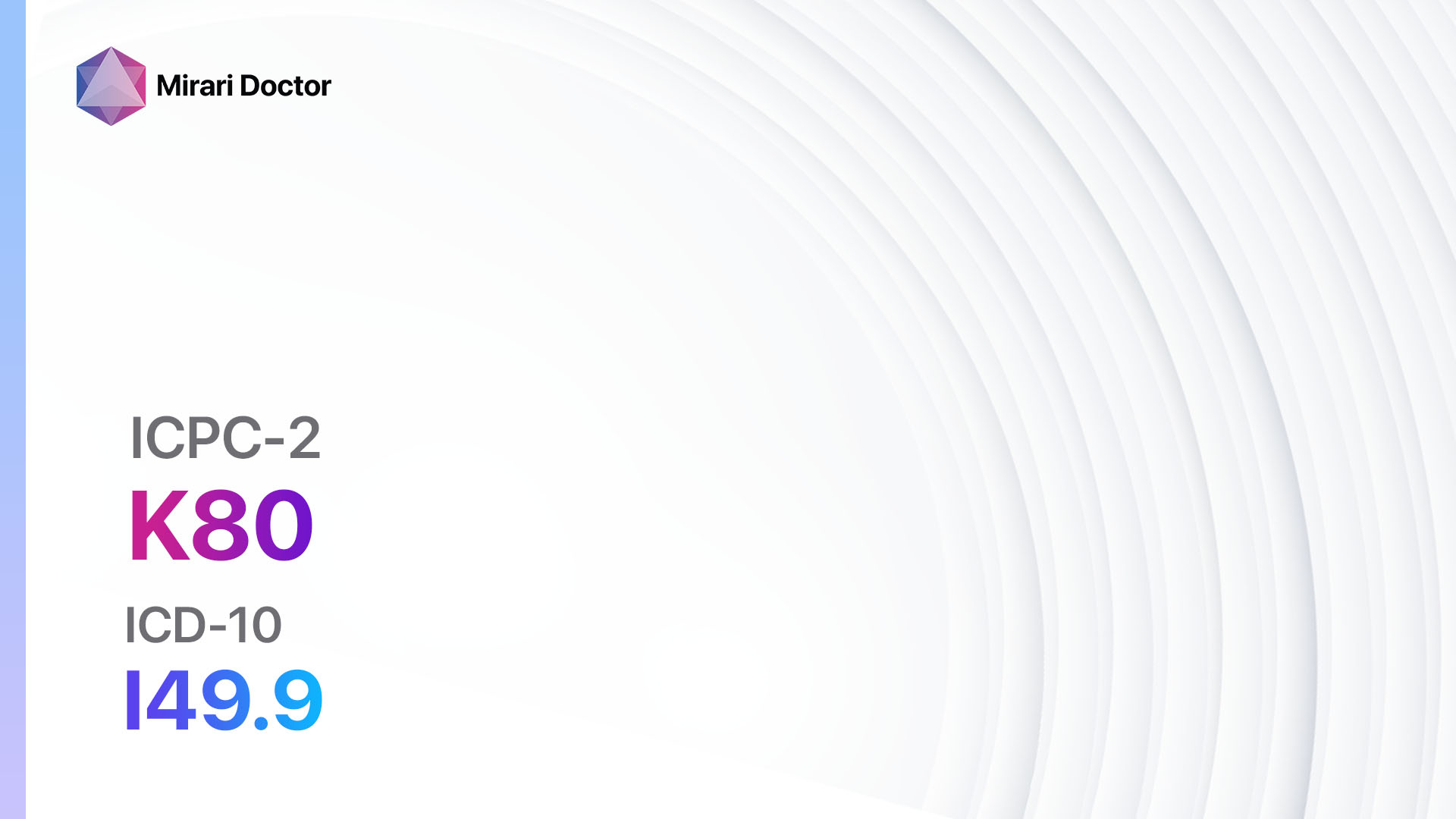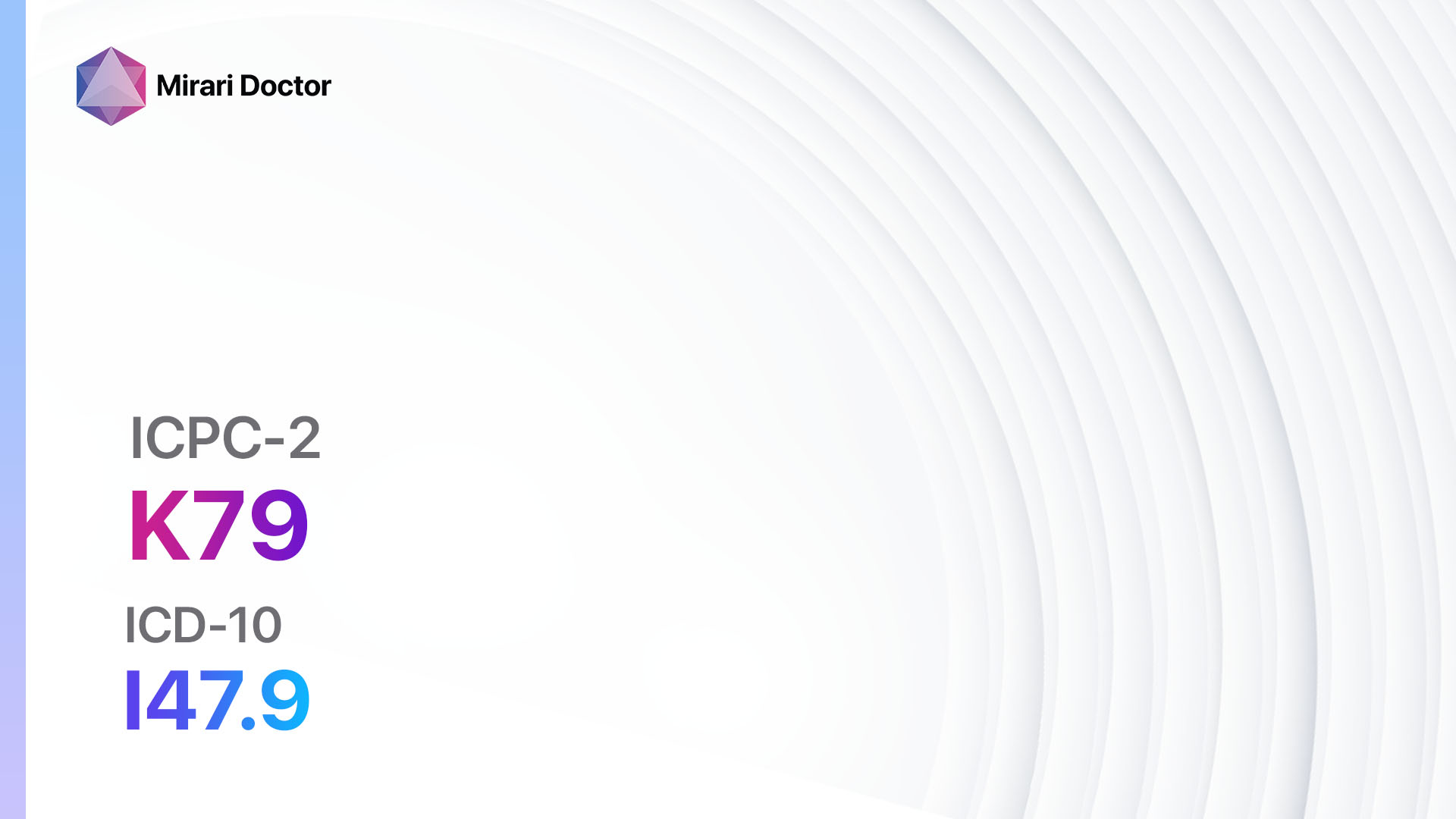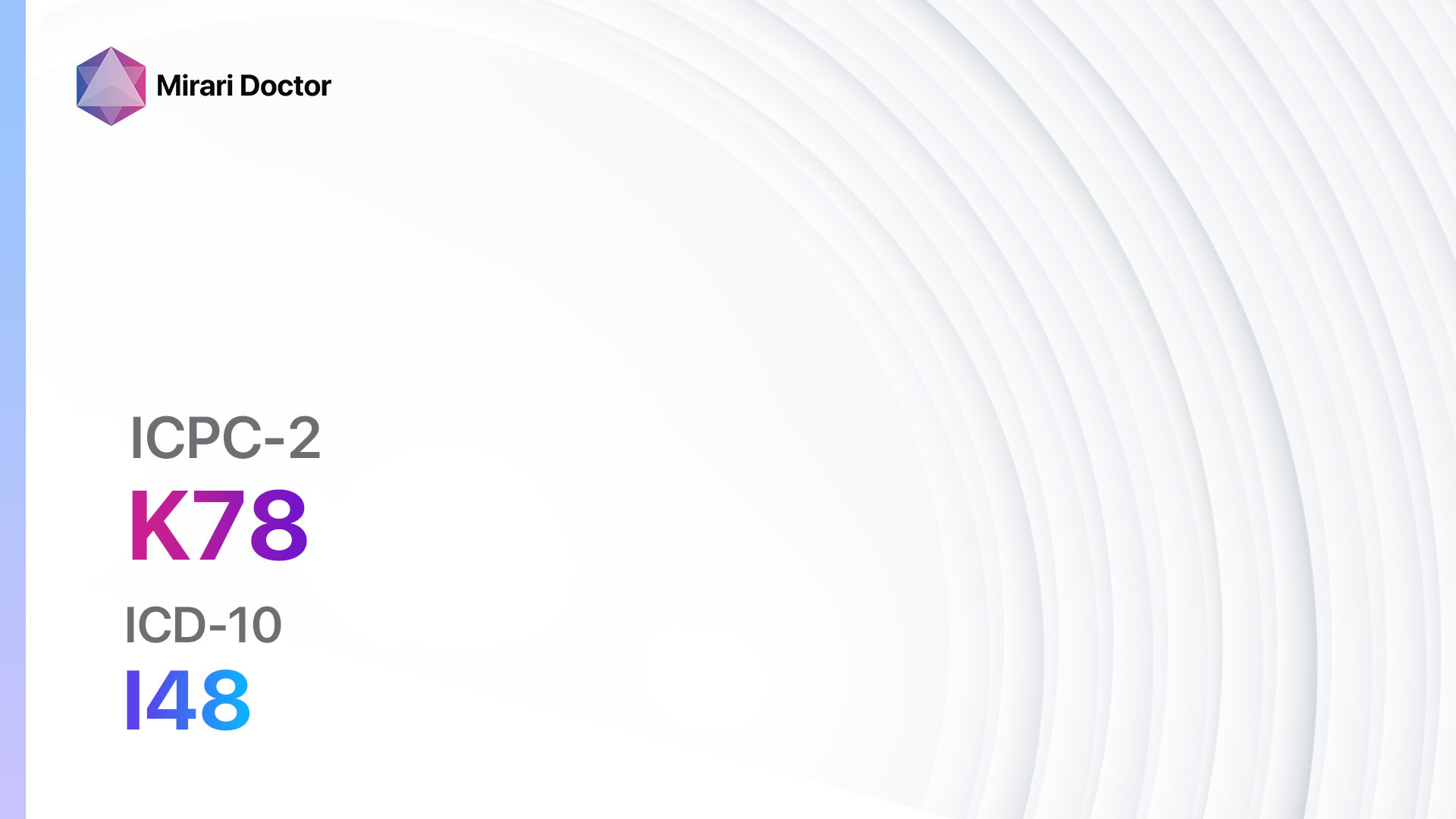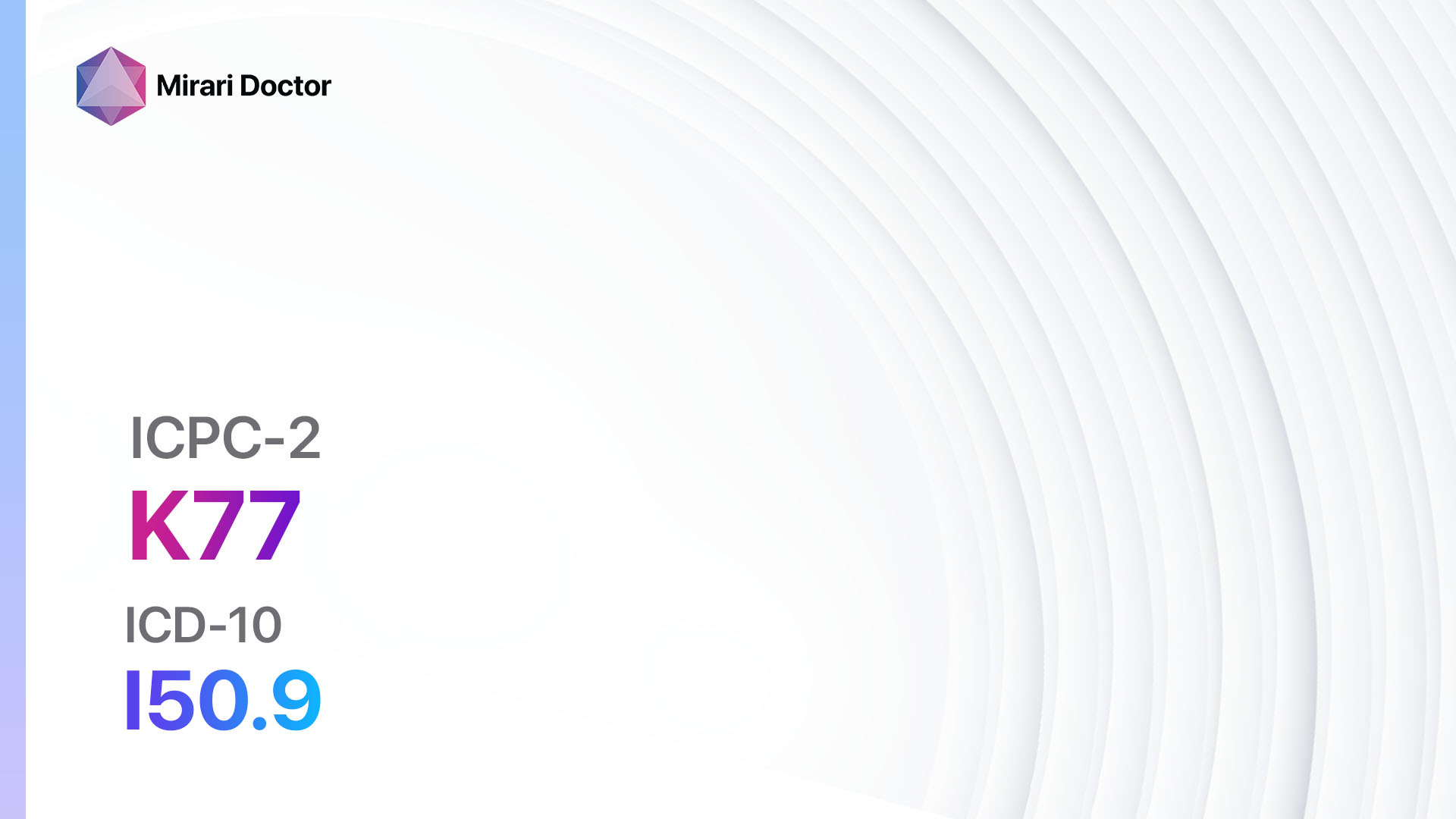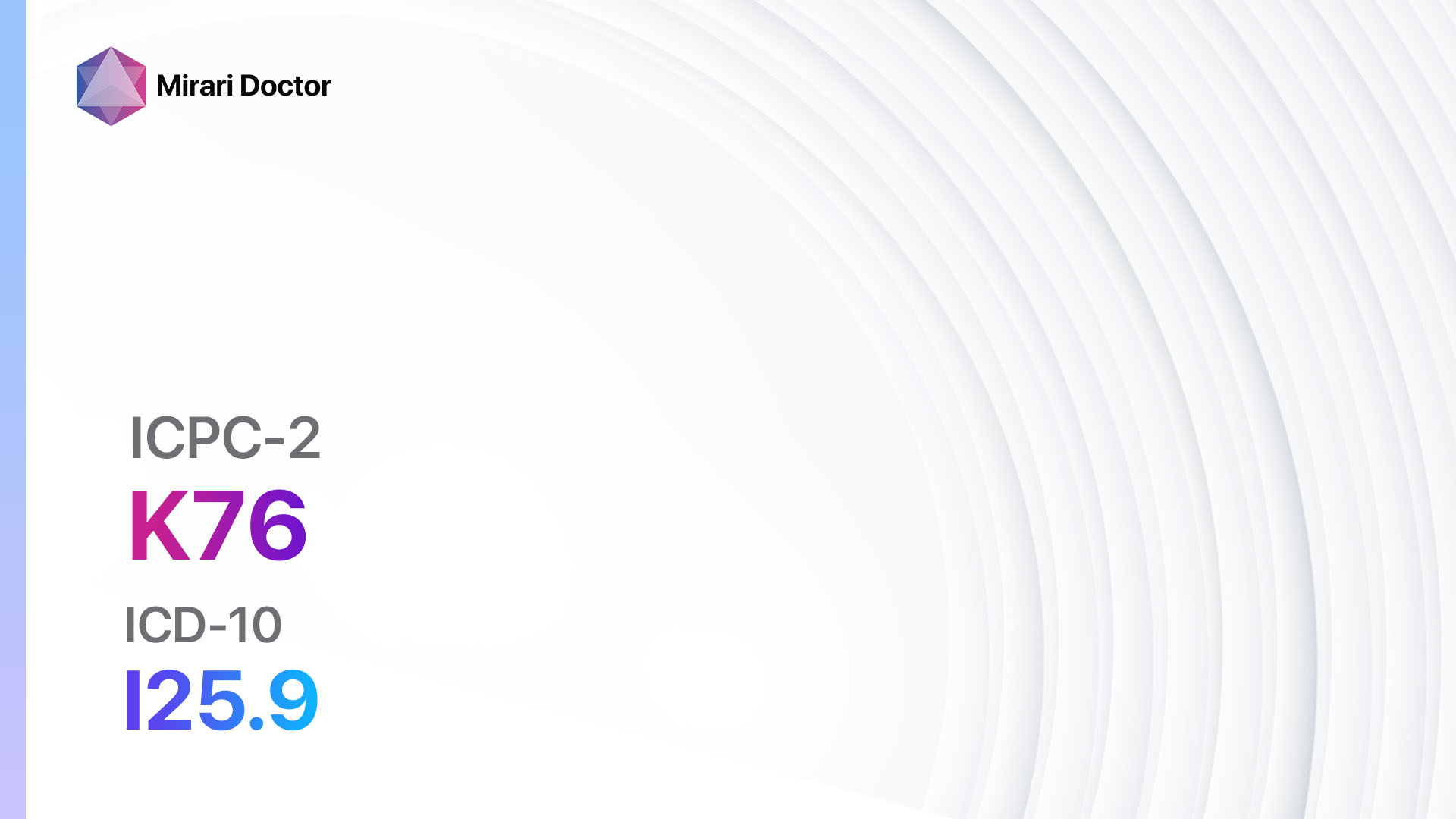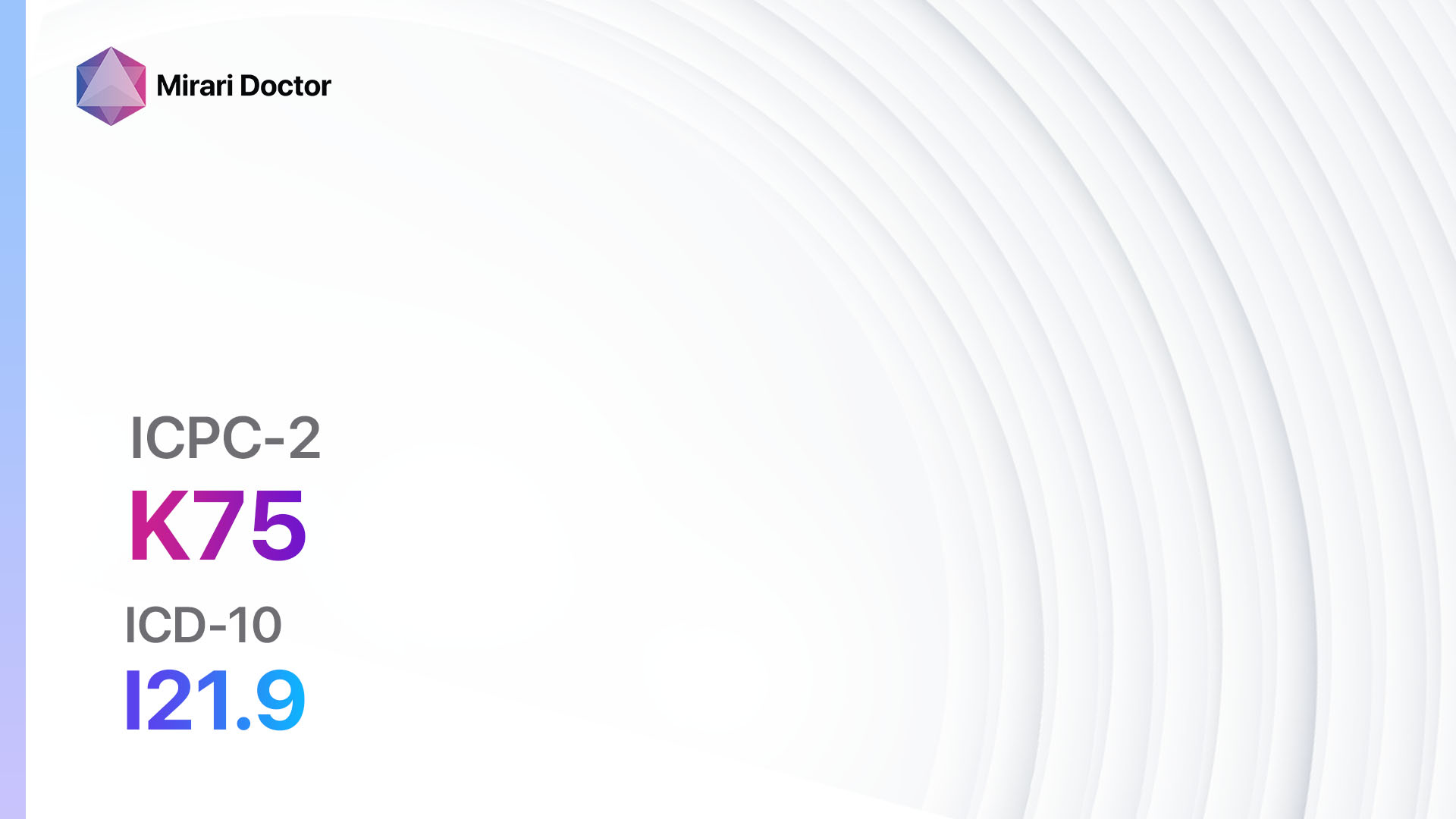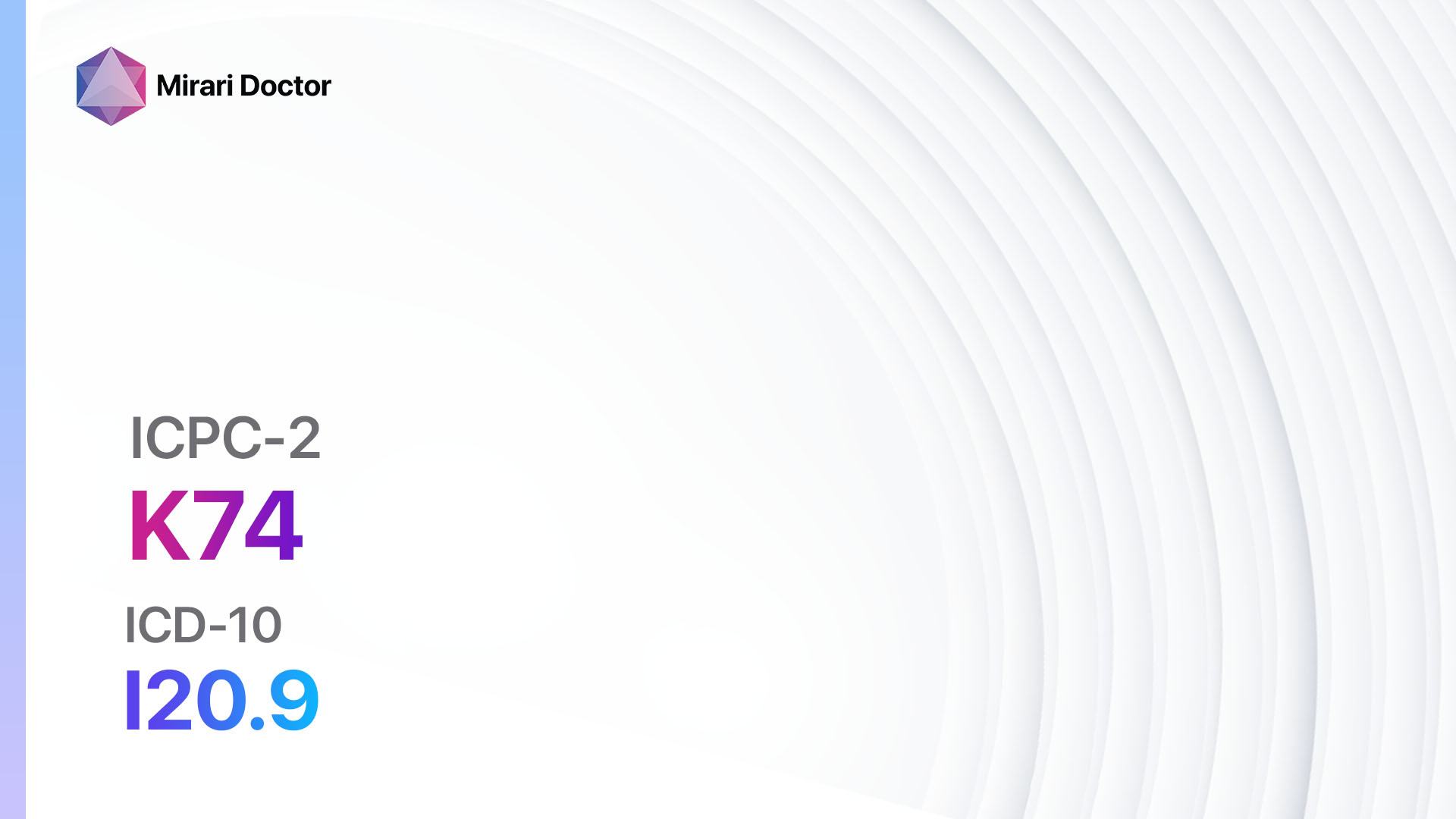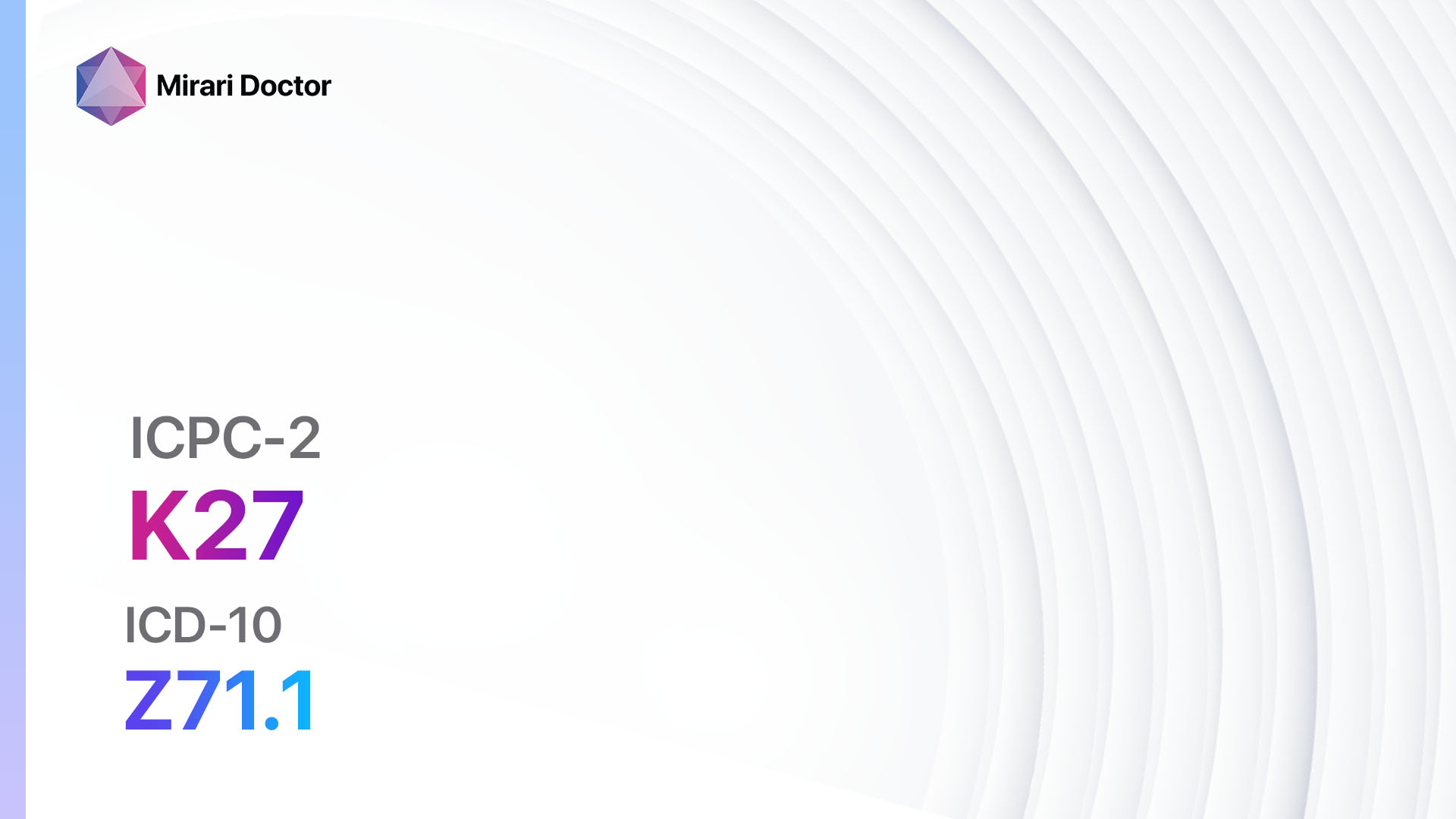
Introduction
Fear of cardiovascular disease is a common concern among individuals, as it is one of the leading causes of death worldwide[1]. This guide aims to provide a comprehensive understanding of the condition, its symptoms, causes, diagnostic steps, possible interventions, and lifestyle modifications that can help manage and prevent cardiovascular disease.
Codes
- ICPC-2 Code: K27 Fear cardiovascular disease other[2][3]
- ICD-10 Code: Z71.1 Person with feared complaint in whom no diagnosis is made[4]
Symptoms
- Chest pain or discomfort: This may be experienced as a squeezing, pressure, or tightness in the chest[5].
- Shortness of breath: Difficulty breathing or feeling breathless, especially during physical activity[5].
- Fatigue: Feeling tired or exhausted even with minimal exertion[5].
- Dizziness or lightheadedness: Feeling faint or experiencing a spinning sensation[5].
- Palpitations: Sensation of a rapid or irregular heartbeat[5].
- Swelling in the legs, ankles, or feet: Fluid retention leading to swelling in the lower extremities[5].
- Nausea or vomiting: Feeling sick to the stomach or vomiting without any apparent cause[5].
- Sweating: Excessive sweating, especially during periods of rest or minimal activity[5].
Causes
- High blood pressure: Increased pressure in the arteries can lead to damage and narrowing of blood vessels[6].
- High cholesterol: Elevated levels of cholesterol can contribute to the formation of plaque in the arteries[6].
- Smoking: Tobacco smoke contains harmful chemicals that can damage blood vessels and increase the risk of cardiovascular disease[6].
- Diabetes: Uncontrolled diabetes can lead to damage to blood vessels and increase the risk of cardiovascular complications[6].
- Obesity: Excess body weight puts additional strain on the heart and blood vessels[6].
- Sedentary lifestyle: Lack of physical activity can contribute to the development of cardiovascular disease[6].
- Family history: Having a close relative with a history of cardiovascular disease increases the risk[6].
- Age: The risk of cardiovascular disease increases with age[6].
- Gender: Men are generally at a higher risk of cardiovascular disease compared to women[6].
- Stress: Chronic stress can contribute to the development of cardiovascular disease[6].
Diagnostic Steps
Medical History
- Gather information about the patient’s risk factors, such as smoking, family history, and medical conditions like diabetes or hypertension[7].
- Assess the patient’s symptoms, including chest pain, shortness of breath, and fatigue[7].
- Inquire about any previous cardiovascular events or interventions[7].
- Evaluate the patient’s lifestyle habits, including diet and exercise[7].
Physical Examination
- Measure blood pressure to assess for hypertension[7].
- Auscultate the heart for abnormal sounds or murmurs[7].
- Palpate peripheral pulses to assess for any abnormalities[7].
- Examine the legs and ankles for signs of swelling or edema[7].
- Assess the patient’s overall appearance and signs of distress[7].
Laboratory Tests
- Lipid profile: Measures the levels of cholesterol and triglycerides in the blood[8].
- Fasting blood glucose: Assesses for diabetes or impaired glucose tolerance[8].
- Complete blood count: Checks for anemia or other blood abnormalities[8].
- C-reactive protein: Measures inflammation in the body, which can be indicative of cardiovascular disease[8].
- Thyroid function tests: Evaluates thyroid hormone levels, as imbalances can contribute to cardiovascular disease[8].
Diagnostic Imaging
- Electrocardiogram (ECG): Records the electrical activity of the heart to detect any abnormalities[9].
- Echocardiogram: Uses sound waves to create images of the heart and assess its structure and function[9].
- Stress test: Evaluates the heart’s response to physical activity or medication-induced stress[9].
- Coronary angiography: Invasive procedure that uses contrast dye and X-rays to visualize the coronary arteries[9].
- CT scan or MRI: Provides detailed images of the heart and blood vessels to assess for any abnormalities[9].
Other Tests
- Cardiac catheterization: Invasive procedure to measure pressures within the heart and assess for blockages[9].
- Holter monitor: Portable device that records the heart’s electrical activity over a 24-hour period[9].
- Genetic testing: Identifies specific genetic mutations that may increase the risk of cardiovascular disease[9].
Follow-up and Patient Education
- Schedule regular follow-up appointments to monitor the patient’s progress and adjust treatment as needed[10].
- Provide education on lifestyle modifications, medication adherence, and symptom recognition[10].
- Encourage the patient to seek immediate medical attention if they experience worsening symptoms or new symptoms[10].
Possible Interventions
Traditional Interventions
Medications:
Top 5 drugs for cardiovascular disease:
- Statins (e.g., Atorvastatin, Simvastatin, Rosuvastatin):
- Cost: Generic versions can be $3-$50/month.
- Contraindications: Active liver disease, hypersensitivity.
- Side effects: Muscle pain, diarrhea, upset stomach.
- Severe side effects: Rhabdomyolysis, liver damage.
- Drug interactions: Grapefruit juice, other cholesterol-lowering agents.
- Warning: Regular liver function tests required.
- Antiplatelet agents (e.g., Clopidogrel, Aspirin):
- Cost: Aspirin is inexpensive (<$10/month). Clopidogrel is $10-$100/month for generic.
- Contraindications: Active bleeding, peptic ulcer disease.
- Side effects: Upset stomach, bleeding.
- Severe side effects: Severe bleeding, allergic reactions.
- Drug interactions: NSAIDs, other blood thinners.
- Warning: Risk of bleeding.
- ACE inhibitors (e.g., Ramipril, Lisinopril):
- Cost: Generics can be $10-$50/month.
- Contraindications: History of angioedema with ACE inhibitors, renal artery stenosis.
- Side effects: Cough, elevated blood urea nitrogen.
- Severe side effects: Angioedema, hyperkalemia.
- Drug interactions: Potassium supplements, NSAIDs.
- Warning: Monitoring of renal function and potassium is required.
- Beta-blockers (e.g., Metoprolol, Atenolol):
- Cost: Generic versions are typically <$30/month.
- Contraindications: Severe bradycardia, uncontrolled heart failure.
- Side effects: Fatigue, dizziness, bradycardia.
- Severe side effects: Bronchospasm, heart block.
- Drug interactions: Calcium channel blockers, insulin.
- Warning: Should not be abruptly stopped.
- Cilostazol (used specifically for claudication in peripheral vascular disease):
- Cost: $30-$200/month.
- Contraindications: Heart failure.
- Side effects: Headache, diarrhea.
- Severe side effects: Agranulocytosis, arrhythmia.
- Drug interactions: Omeprazole, sertraline.
- Warning: Risk of ventricular tachycardia.
Alternative Drugs:
- Fibrates (e.g., Fenofibrate): Useful for patients with high triglycerides.
- Ezetimibe: A cholesterol absorption inhibitor.
- Niacin: Vitamin B3 derivative that can help with cholesterol.
- Pentoxifylline: An alternative to cilostazol for claudication in peripheral vascular disease.
- Rivaroxaban: An anticoagulant used for peripheral artery disease to reduce the risk of major cardiovascular events.
Surgical Procedures:
- Angioplasty and stent placement: A catheter is used to place a stent to open up narrowed arteries. Cost: $15,000 to $50,000.
- Coronary artery bypass surgery (CABG): Redirects blood around blocked or narrowed coronary arteries. Cost: $70,000 to $200,000.
Alternative Interventions
- Acupuncture: May help improve blood flow and reduce pain. Cost: $60-$120 per session.
- Chelation therapy: Controversial treatment involving the administration of chelating agents to remove heavy metals from the body. Cost: $75-$150 per session.
- Hyperbaric oxygen therapy: Involves breathing pure oxygen in a pressurized chamber to increase oxygen delivery to tissues. Cost: $200-$300 per session.
- Herbal supplements: Some herbs, such as garlic and ginkgo biloba, may have potential benefits for improving circulation. Cost: Varies depending on the specific supplement.
Lifestyle Interventions
- Regular exercise: Engaging in aerobic activities for at least 150 minutes per week can improve cardiovascular health. Cost: Varies (e.g., gym membership, equipment).
- Healthy diet: Emphasize a diet rich in fruits, vegetables, whole grains, lean proteins, and healthy fats. Cost: Varies depending on food choices.
- Smoking cessation: Quitting smoking can significantly reduce the risk of cardiovascular disease. Cost: Varies (e.g., nicotine replacement therapy, counseling).
- Stress management: Techniques such as meditation, yoga, or counseling can help reduce stress levels. Cost: Varies (e.g., classes, therapy sessions).
- Weight management: Achieving and maintaining a healthy weight can reduce the strain on the heart and blood vessels. Cost: Varies (e.g., diet programs, personal trainers).
It is important to note that the cost ranges provided are approximate and may vary depending on the location and availability of the interventions.
Mirari Cold Plasma Alternative Intervention
Understanding Mirari Cold Plasma
- Safe and Non-Invasive Treatment: Mirari Cold Plasma is a safe and non-invasive treatment option for various skin conditions. It does not require incisions, minimizing the risk of scarring, bleeding, or tissue damage.
- Efficient Extraction of Foreign Bodies: Mirari Cold Plasma facilitates the removal of foreign bodies from the skin by degrading and dissociating organic matter, allowing easier access and extraction.
- Pain Reduction and Comfort: Mirari Cold Plasma has a local analgesic effect, providing pain relief during the treatment, making it more comfortable for the patient.
- Reduced Risk of Infection: Mirari Cold Plasma has antimicrobial properties, effectively killing bacteria and reducing the risk of infection.
- Accelerated Healing and Minimal Scarring: Mirari Cold Plasma stimulates wound healing and tissue regeneration, reducing healing time and minimizing the formation of scars.
Mirari Cold Plasma Prescription
Video instructions for using Mirari Cold Plasma Device – K27 Fear cardiovascular disease other (ICD-10:Z71.1)
| Mild | Moderate | Severe |
| Mode setting: 1 (Infection) Location: 5 (Lungs) Morning: 15 minutes, Evening: 15 minutes |
Mode setting: 1 (Infection) Location: 5 (Lungs) Morning: 30 minutes, Lunch: 30 minutes, Evening: 30 minutes |
Mode setting: 1 (Infection) Location: 5 (Lungs) Morning: 30 minutes, Lunch: 30 minutes, Evening: 30 minutes |
| Mode setting: 2 (Wound Healing) Location: 5 (Lungs) Morning: 15 minutes, Evening: 15 minutes |
Mode setting: 2 (Wound Healing) Location: 5 (Lungs) Morning: 30 minutes, Lunch: 30 minutes, Evening: 30 minutes |
Mode setting: 2 (Wound Healing) Location: 5 (Lungs) Morning: 30 minutes, Lunch: 30 minutes, Evening: 30 minutes |
| Mode setting: 7 (Immunotherapy) Location: 1 (Sacrum) Morning: 15 minutes, Evening: 15 minutes |
Mode setting: 7 (Immunotherapy) Location: 1 (Sacrum) Morning: 30 minutes, Lunch: 30 minutes, Evening: 30 minutes |
Mode setting: 7 (Immunotherapy) Location: 1 (Sacrum) Morning: 30 minutes, Lunch: 30 minutes, Evening: 30 minutes |
| Mode setting: 7 (Immunotherapy) Location: 4 (Heart, Bile & Pancreas) Morning: 15 minutes, Evening: 15 minutes |
Mode setting: 7 (Immunotherapy) Location: 4 (Heart, Bile & Pancreas) Morning: 30 minutes, Lunch: 30 minutes, Evening: 30 minutes |
Mode setting:7 (Immunotherapy) Location: 4 (Heart, Bile & Pancreas) Morning: 30 minutes, Lunch: 30 minutes, Evening: 30 minutes |
| Total Morning: 60 minutes approx. $10 USD, Evening: 60 minutes approx. $10 USD |
Total Morning: 120 minutes approx. $20 USD, Lunch: 120 minutes approx. $20 USD, Evening: 120 minutes approx. $20 USD, |
Total Morning: 120 minutes approx. $20 USD, Lunch: 120 minutes approx. $20 USD, Evening: 120 minutes approx. $20 USD, |
| Usual treatment for 7-60 days approx. $140 USD – $1200 USD | Usual treatment for 6-8 weeks approx. $2,520 USD – $3,360 USD |
Usual treatment for 3-6 months approx. $5,400 USD – $10,800 USD
|
 |
|
Use the Mirari Cold Plasma device to treat Fear cardiovascular disease other effectively.
WARNING: MIRARI COLD PLASMA IS DESIGNED FOR THE HUMAN BODY WITHOUT ANY ARTIFICIAL OR THIRD PARTY PRODUCTS. USE OF OTHER PRODUCTS IN COMBINATION WITH MIRARI COLD PLASMA MAY CAUSE UNPREDICTABLE EFFECTS, HARM OR INJURY. PLEASE CONSULT A MEDICAL PROFESSIONAL BEFORE COMBINING ANY OTHER PRODUCTS WITH USE OF MIRARI.
Step 1: Cleanse the Skin
- Start by cleaning the affected area of the skin with a gentle cleanser or mild soap and water. Gently pat the area dry with a clean towel.
Step 2: Prepare the Mirari Cold Plasma device
- Ensure that the Mirari Cold Plasma device is fully charged or has fresh batteries as per the manufacturer’s instructions. Make sure the device is clean and in good working condition.
- Switch on the Mirari device using the power button or by following the specific instructions provided with the device.
- Some Mirari devices may have adjustable settings for intensity or treatment duration. Follow the manufacturer’s instructions to select the appropriate settings based on your needs and the recommended guidelines.
Step 3: Apply the Device
- Place the Mirari device in direct contact with the affected area of the skin. Gently glide or hold the device over the skin surface, ensuring even coverage of the area experiencing.
- Slowly move the Mirari device in a circular motion or follow a specific pattern as indicated in the user manual. This helps ensure thorough treatment coverage.
Step 4: Monitor and Assess:
- Keep track of your progress and evaluate the effectiveness of the Mirari device in managing your Fear cardiovascular disease other. If you have any concerns or notice any adverse reactions, consult with your health care professional.
Note
This guide is for informational purposes only and should not replace the advice of a medical professional. Always consult with your healthcare provider or a qualified medical professional for personal advice, diagnosis, or treatment. Do not solely rely on the information presented here for decisions about your health. Use of this information is at your own risk. The authors of this guide, nor any associated entities or platforms, are not responsible for any potential adverse effects or outcomes based on the content.
Mirari Cold Plasma System Disclaimer
- Purpose: The Mirari Cold Plasma System is a Class 2 medical device designed for use by trained healthcare professionals. It is registered for use in Thailand and Vietnam. It is not intended for use outside of these locations.
- Informational Use: The content and information provided with the device are for educational and informational purposes only. They are not a substitute for professional medical advice or care.
- Variable Outcomes: While the device is approved for specific uses, individual outcomes can differ. We do not assert or guarantee specific medical outcomes.
- Consultation: Prior to utilizing the device or making decisions based on its content, it is essential to consult with a Certified Mirari Tele-Therapist and your medical healthcare provider regarding specific protocols.
- Liability: By using this device, users are acknowledging and accepting all potential risks. Neither the manufacturer nor the distributor will be held accountable for any adverse reactions, injuries, or damages stemming from its use.
- Geographical Availability: This device has received approval for designated purposes by the Thai and Vietnam FDA. As of now, outside of Thailand and Vietnam, the Mirari Cold Plasma System is not available for purchase or use.
References
- Roth GA, Mensah GA, Johnson CO, et al. Global Burden of Cardiovascular Diseases and Risk Factors, 1990-2019: Update From the GBD 2019 Study. J Am Coll Cardiol. 2020;76(25):2982-3021. doi:10.1016/j.jacc.2020.11.010
- ICPC-2 – English. WONCA International Classification Committee. https://www.globalfamilydoctor.com/site/DefaultSite/filesystem/documents/Groups/WICC/International%20Classification%20of%20Primary%20Care%20Dec16.pdf. Published December 2016.
- ICPC-2 – Dansk udgave. Dansk Selskab for Almen Medicin. https://www.dsam.dk/flx/forskning/icpc/. Published 2020.
- ICD-10 Code Z71.1 – Person with feared health complaint in whom no diagnosis is made. AAPC. https://www.aapc.com/codes/icd-10-codes/Z71.1. Published 2021.
- Symptoms of Heart Disease. www.heart.org. https://www.heart.org/en/health-topics/heart-attack/warning-signs-of-a-heart-attack. Accessed June 20, 2024.
- Cardiovascular diseases (CVDs). World Health Organization. https://www.who.int/news-room/fact-sheets/detail/cardiovascular-diseases-(cvds). Published June 11, 2021.
- Arnett DK, Blumenthal RS, Albert MA, et al. 2019 ACC/AHA Guideline on the Primary Prevention of Cardiovascular Disease: A Report of the American College of Cardiology/American Heart Association Task Force on Clinical Practice Guidelines. Circulation. 2019;140(11):e596-e646. doi:10.1161/CIR.0000000000000678
- Cardiac Diagnostic Tests. www.heart.org. https://www.heart.org/en/health-topics/heart-attack/diagnosing-a-heart-attack/cardiac-diagnostic-tests. Accessed June 20, 2024.
- Fihn SD, Gardin JM, Abrams J, et al. 2012 ACCF/AHA/ACP/AATS/PCNA/SCAI/STS guideline for the diagnosis and management of patients with stable ischemic heart disease: a report of the American College of Cardiology Foundation/American Heart Association task force on practice guidelines, and the American College of Physicians, American Association for Thoracic Surgery, Preventive Cardiovascular Nurses Association, Society for Cardiovascular Angiography and Interventions, and Society of Thoracic Surgeons. Circulation. 2012;126(25):e354-e471. doi:10.1161/CIR.0b013e318277d6a0
- Smith SC Jr, Benjamin EJ, Bonow RO, et al. AHA/ACCF Secondary Prevention and Risk Reduction Therapy for Patients with Coronary and other Atherosclerotic Vascular Disease: 2011 update: a guideline from the American Heart Association and American College of Cardiology Foundation. Circulation. 2011;124(22):2458-2473. doi:10.1161/CIR.0b013e318235eb4d
Related articles
Made in USA


